THE R ECORD







APPLECROSS Parishioner Josh Court and his team mate, Michael Snart, have been selected to represent Australia at the 26th Summer World Universiade Games 2011 in Shenzen, China.
The pair are the current Australian Junior Under 23 Men’s Beach Volleyball Champions and the WA Open Men’s Beach Volleyball Champions.
‘Being selected as the top Men’s Beach Volleyball team to represent Australia in the University Games is a real privilege. Michael and I are determined to give it our all and hope to come back with a gold medal,’ Josh said.

Josh, 22, is currently studying for a Bachelor of Recreation and Sports Management, and Michael (22, from Kingsley) is studying Sports Science at Edith Cowan University.
He was given a special blessing by Father Peter Whitely at Applecross Parish last Sunday. The parish has encouraged Josh’s commitment to his sport and training and will be praying that the boys be rewarded for their efforts during the Games.
The Universiade is an international sporting and cultural festival held every two years. Open to all student athletes aged 17-28, it is one of the largest sporting events in the world.
Josh and Michael will be keeping a blog during their trip to China. It can be found at www.teamjoshcourt-michaelsnart.com. The 26th Summer Universiade will take place from 12-23 August.


 BY ROBERT HIINI
BY ROBERT HIINI
A PRODIGAL son of sorts returned to the Archdiocese last Tuesday night when the remains of Perth’s first Catholic Bishop, John Brady, came across the Swan, to be welcomed by his successor, Archbishop Barry Hickey. The Archbishop was waiting at Barrack Street Jetty, just after 6pm as the Saratoga docked, having departed the South of Perth Yacht Club half-an-hour before.
A crozier was held aloft at the bow of the yacht with Cathedral Dean Mgr Michael Keating and organiser Fr Robert Cross standing close
behind as the yacht edged towards the jetty. Brady historian Odhran O’Brien and members of the Brady family, visiting specially from Ireland, were on hand to receive the ossuary containing Bishop Brady’s remains.
Then began a procession past a chiming Perth Belltower and the Supreme Court Gardens and down St George’s Terrace to St John’s Pro-Cathedral, begun by Brady on the Feast of St John the Evangelist on 27 December in 1843.
There, vespers were sung in anticipation of Brady’s reinterment in the Cathedral crypt the following day. Fr Robert
Cross said the welcome and reinterment brought completion to a lot of preparation, including the restoration of St Mary’s Cathedral, which included the building of a crypt.
“He was the first Bishop of this diocese and its foundation was through his own missionary zeal and for that we need to be eternally grateful,” Fr Cross said.
Fr Cross said he imagined Bishop Brady might have mixed feelings about returning considering the circumstances of his departure; leaving the diocese under the pall of disobedience and financial disarray. “But his heart was
here. Obviously he never wanted to leave and I think he would be pleased, really, to be recognised for what he did.”
Archbishop Hickey said he was “thrilled” and felt privileged to be welcoming Bishop Brady back to the diocese.
“Although he died in exile, he never resigned as Bishop of Perth and when he died, he was still the Bishop of Perth,” the Archbishop said.
“We think it’s fitting that, for all that he did here in this diocese, we should bring him back to be among us; to be home again and close to the wonderful things he began for us.”
Photos - Page 7

More than 1,000 expectant mothers in Papua New Guinea will receive birthing kits through the work of Medicine students at the University of Notre Dame Australia’s Sydney Campus.
The initiative was inspired by Birthing Kit Foundation (Australia), an organisation dedicated to improving the conditions of women who give birth at home in developing countries.
The Medical Association of Notre Dame’s Sydney campus, along with the school’s Global Health and Social Justice sub-committee, collaborated to assemble the Birthing Kits on Saturday, 23 July.
Each Birthing Kit includes six items – a plastic sheet, soap, two gloves, a sterile scalpel blade, three cords and five gauze squares.
MANDUS President Brent
Doolan said the challenging environment of postnatal care for people in developing countries can result in extreme discomfort for the mother and her baby.
Mr Doolan said that in some regions of Papua New Guinea it is not uncommon for the umbilical cord to be cut with a sharpened sea shell or a metal blade.
“With an estimated 385,000 women dying annually in childbirth, many from infections acquired during the process, there is a great need for our clean Birthing Kits,” Mr Doolan said.
“We wish to assist by educating expectant mothers on birth practices and work alongside the World Health Organisation’s millennium development goals by helping to improve maternal health internationally. “As future doctors,
it is fundamental for us to understand the improvements that we can accomplish in the developing world. I think this brings our medical students one step closer to this end goal.”
Dean of the School of Medicine in Sydney, Dr Christine Bennett, supported the Birthing Kits initiative of the Notre Dame medical students.
“We are very proud of Notre Dame’s Medicine students and their commitment to making a practical difference to those in need,” Dr Bennett said.
“This Birthing Kit initiative is about rolling their sleeves up and taking action that will, in partnership with the Birthing Kit Foundation (Australia), have a real impact on the health of women and babies in Papua New Guinea.”






THE World Youth Day pilgrimage of 38 young Australian-Vietnamese Catholics began officially last Saturday when about 700 people gathered to celebrate a Commissioning Mass at the Vietnamese Catholic Community Centre in the northern Perth suburb of Westminster.
The community’s chaplain, Fr Huynh Nguyen, celebrated the Mass in both English and Vietnamese to cater for old and young.
A children and youth choir of nearly 50 sang hymns in English. After Holy Communion, each pilgrim received a WYD candle which would be lit by their families in prayer for them whilst they are away. Fr Nguyen asked the whole congregation to raise their hands to pray upon all the pilgrims.

Journalists



office@therecord.com.au
Advertising/Production
Mat De Sousa production@therecord.com.au
Accounts
June
Catherine
Record
Bibiana
office@therecord.com.au
The pilgrims will fly out of Perth this week. As part of their pilgrimage, “Follow Pathways of Jesus”, they will travel to the Holy Land, Rome and then on to Spain, where the week-long WYD festivities will begin in Madrid on 16 August.
The pilgrimage has been organised by Sr Joanne Linh Le with the help of Henry Hoang Nguyen and Peter Nguyen. Fr Quang Hong Pham will be the chaplain for the pilgrims on this spiritual journey.
The spiritual preparations for this year’s WYD began shortly after the last WYD in Sydney 2008. These have included: a Bible sharing group consisting of young adults; monthly seminars on topics that included “The Introduction to the Bible”; “The
Gospel of St Matthew”; “The Church”; Biblical Origins of the Eucharist” and “Places where Jesus walked”. Guest speakers included Archbishop Barry Hickey
The Vietnamese Youth Ministry was established in 2006 with the help of Josephite Sister Joanne Linh Le.
There is a bilingual mass at the Vietnamese Catholic Community Centre on the last Saturday of each month to cater for youth. Since WYD 2008, there was an increase in the number of youth leaders to help with the Centre’s youth ministry
activities such as a children’s liturgy at Sunday Masses and at the teenagers’ liturgy. Like any youth group, members of the youth choir move on, so Sr Joanne has been busy recruiting new members to join the “Little Angel Choir” to sing at the bilingual Masses each month.
Please pray for all those taking part in the “Pathways of Jesus” pilgrimage and WYD Madrid so that their faith will be “planted and built up in Jesus Christ, firm in the faith” and they may become the ‘yeast’ in our society today.





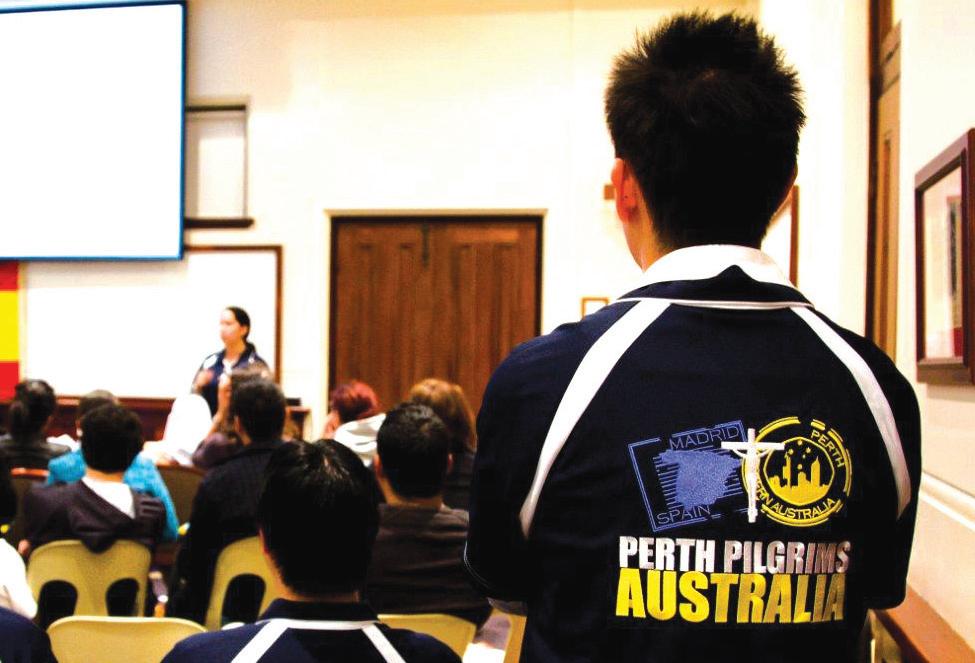
Pope hopes to light spark in the hearts of Spain’s lukewarmBY CINDY WOODEN
POPE Benedict XVI will visit Spain in late August, celebrating the youthfulness and vigour of the Catholic faith in a country where the Catholic majority often seems to have little or no impact on modern public life.
The primary focus on the Pope’s trip, from 18 to 21 August, will be on the Catholic youth from around the globe participating in World Youth Day. Pope Benedict also will meet with Spain’s royal family and the prime minister, Jose Luis Rodriguez Zapatero, whose government has promoted several policies opposed by the Church, including relaxing Spain’s divorce laws, easing restrictions on abortion, legalising same-sex marriage and allowing homosexual couples to adopt.
Welcoming a new Spanish ambassador to the Vatican in April, Pope Benedict expressed concern that in certain sectors of Spanish society, religion was “considered socially insignificant, even troublesome”, with the result that faith was marginalised “through defamation, ridicule [and] even indifference to obvious cases of profanation” of religious objects and monuments.
The situation is considered particularly worrying because more than 92 per cent of Spain’s 46 million citizens are baptised Catholic and the country has a long Catholic history. Spain has given the Church some of its greatest saints and mystics, and Spanish members of Religious Orders continue to serve as missionaries around the world.
The organisers of World Youth Day 2011, which kicks off on 16 August, hope the hordes of young
Church in Spain
42.5 MILLION CATHOLICS
92% of total population
22,890 parishes
126 bishops
24,778 priests
54,184 religious
1.5 million students attend
5,535 Catholic schools from kindergartens to universities
803 homes for elderly/disabled
391 orphanages/nurseries
131 hospitals/clinics
Source: The Vatican ©2011 CNS
Catholics descending on Madrid not only will energise each other’s faith but will also be powerful witnesses to the lukewarm among Spain’s Catholics.
“I think the impact will be huge; at least I hope so,” WYD Madrid director Yago de la Cierva said. “Spain is suffering through a process of secularisation that is very deep and moving very fast.”
BY ANITA PARKER Director, Catholic Youth MinistryIN final preparations for their trip to World Youth Day in Madrid, more than 80 young people met with Archbishop Barry Hickey and Auxiliary Bishop Donald Sproxton for a blessing and words of advice on the spiritual journey on which they are embarking.
It has been three years since Sydney hosted the last WYD and the Madrid WYD is tipped to bring together two to three million young people from around the world.
The Perth Catholic Youth Ministry group, with which Bishop Sproxton will travel, comprises 75 pilgrims. Other communities and parishes sending large groups of pilgrims include the Vietnamese Catholic Community, the NeoCatechumenal Way and the parishes of Whitfords, Greenwood and Wanneroo.
Along with delegations from St Vincent de Paul, Emmanuel Community and the Marists, just to name a few, the total number of Perth pilgrims attending WYD2011 is more than 150.
The CYM group is made up of
a number of smaller groups and individuals travelling together. The Aboriginal Catholic Ministry is sponsoring six pilgrims to travel with the group, while Aquinas College is sending nine students and two staff. This will be a great diversity in cultures and age on the pilgrimage together.
The trip will include the diocese of Tui-Vigo in Galicia, north-western Spain. Tui was the birthplace of Dom Rosendo Salvado, the founder of the Benedictine monastery at New Norcia. The pilgrimage will then travel to Madrid for the WYD week, and an optional extension to Fatima, Rome and Assisi.
Pilgrims from all groups will be commissioned this Sunday by Bishop Sproxton at the 11am Mass at St Mary’s Cathedral.
To follow the WYD journey, CYM has established a blog at www.cymbloggers.blogspot.com, to which videos, photgraphs and other updates will be posted throughout the journey. The website Xt3.com will be webcasting all major WYD events for people back home to follow the WYD week.
The CYM office will be closed for August and will re-open in
September. There will be WYD reunion events – bringing WYD back to Perth – on the weekend of 17-18 September. Visit the website cym.com.au for more information.

The Parish, The Nation, The World

Coordinating a 1,600km round trip from Sydney to the remote New South Wales town of Bourke for a group of medicine students provided an exciting adventure and challenge for the University of Notre Dame Australia’s new student chaplaincy convenor, Jessica Langrell.
The seven-day trip with the students was the first regional project for Ms Langrell, who joined the university’s Campus Life & Ministry Office at the beginning of 2011.
The Chaplaincy Bourke Service Trip was supported by the Bourke Shire Council and the Missionaries of Charity, who provided accommodation and opportunities for students to engage with the local community.
Throughout the week, students assisted the sisters with their work, which included conducting several home visits to families in the town, helping at their day-care school as well as assisting them with restoration work on their convent.
The students also worked with the local St Vincent de Paul Society to help set up a new kitchen for the Meals on Wheels program that provides food to nearly one-fifth of the Bourke population of 2,000.
Through Bourke’s Police, Community Youth Centre (PCYC) and the Missionaries of Charity, the students also had the chance to spend time with 200 local Aboriginal children when they hosted a “Community Festival”
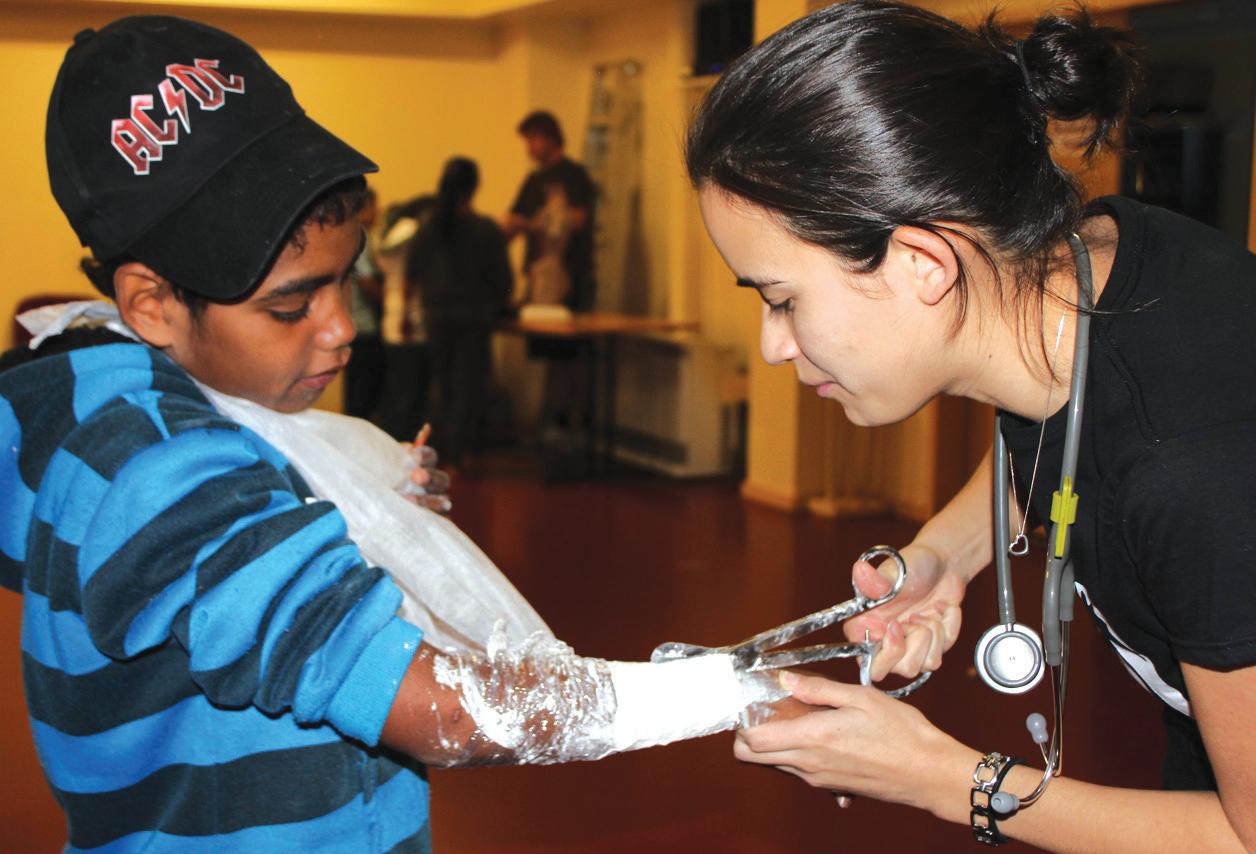
on their second day in town. The festival featured sport, entertainment, face painting, food and several activities for youth of all ages.
Another afternoon session for the PCYC saw the university students teaching the children about basic medical skills.
Ms Langrell said the experience a fuelled interest in the students about working in rural and remote communities.
“Through this trip, in combination with serving the local community, we wanted to provide access and firsthand experience for students to seriously consider the option. Immersing our students in towns like Bourke gives them the opportunity to gain an understand-


ing of the challenges that these communities face.
“Not only does this experience give the medical students an opportunity to look at the possibilities of taking on a rural placement in the future, but also allows them to develop relationships and therefore better understand and meet the needs of the people.
“We felt very welcome and are grateful for the town’s support and generous hospitality. It is our hope to continue our relationship with the Bourke community by returning next year with another group.”
The new role of student chaplaincy convenor is to support the spiritual and pastoral welfare of students on NDA’s Sydney campus.
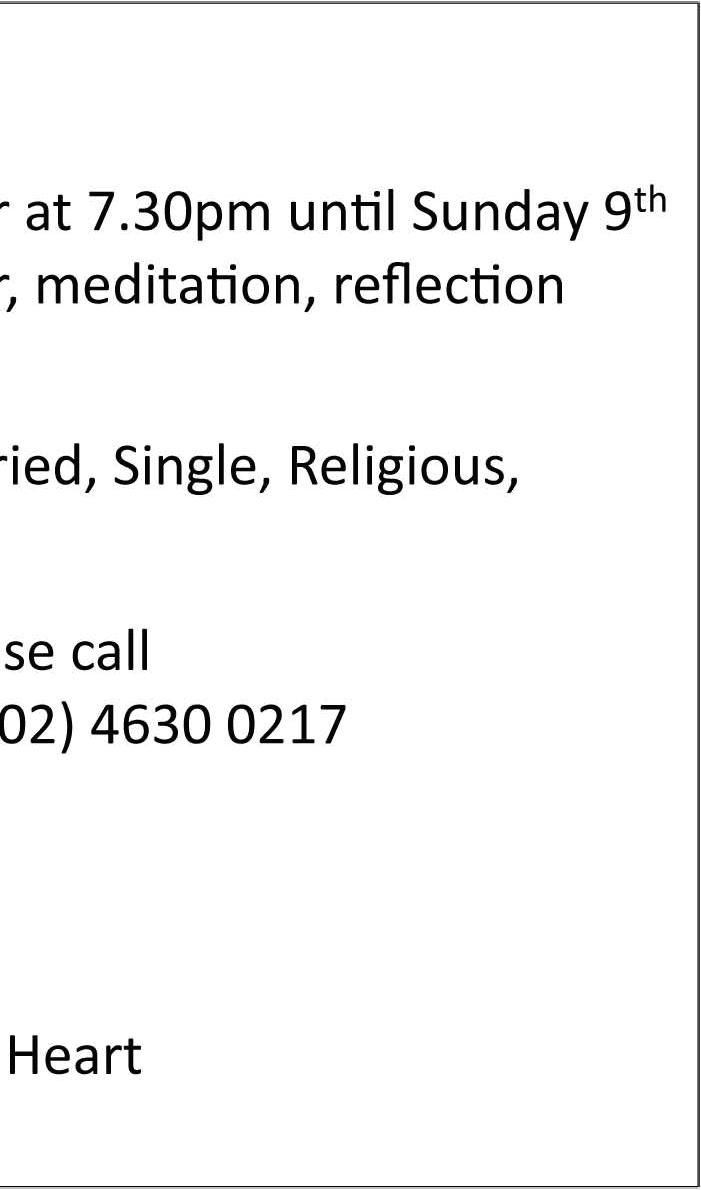

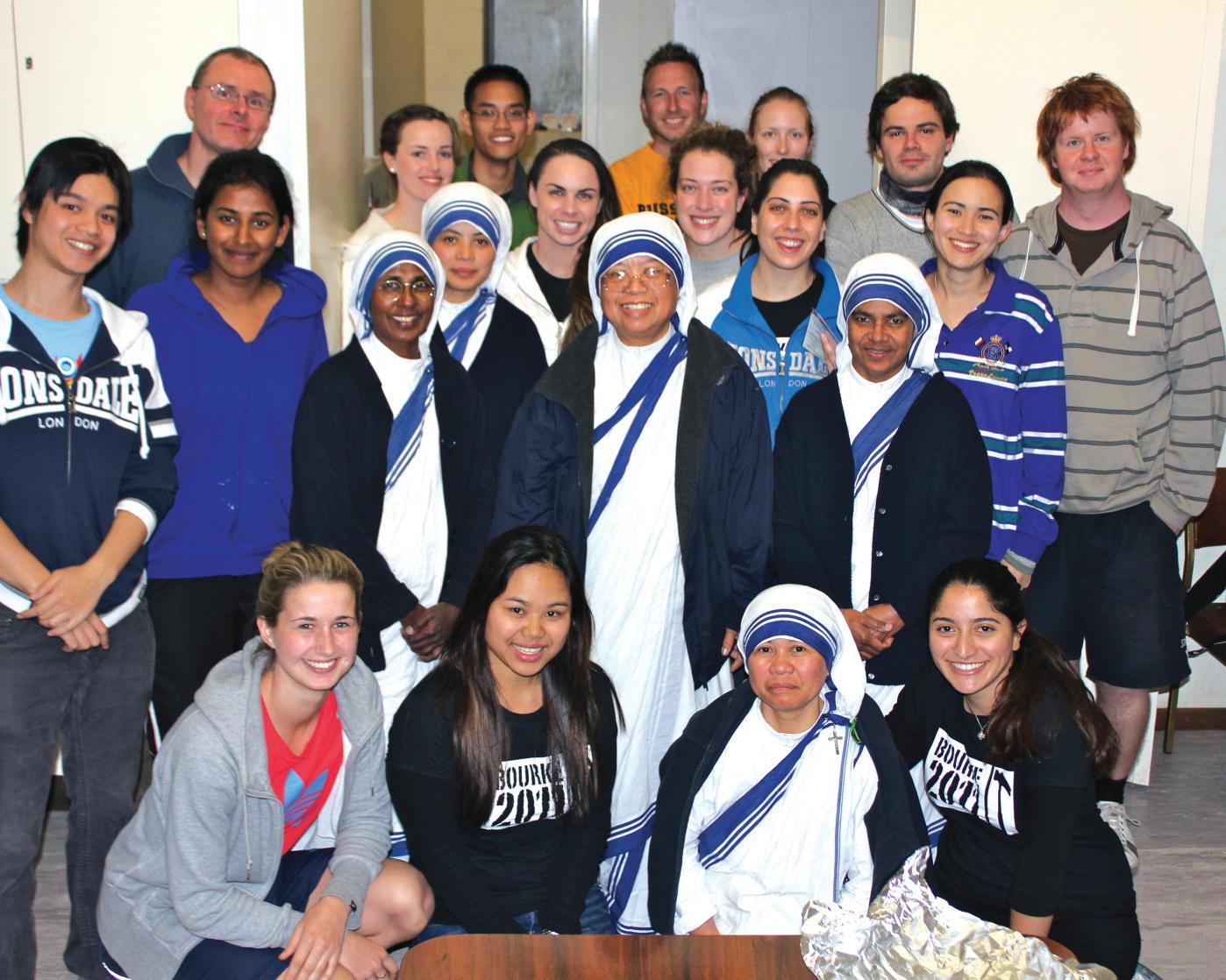
As age did not weary, nor can death conquerBY MARK REIDY
“I never think about retiring”, Father Luis Ruiz told fellow journalist Robert Hiini and myself when we met the then 94-year-old Jesuit in Macau, China in 2009. “As long as I can still move and serve others, I will keep on working”.
Fr Ruiz died on July 26 due to respiratory failure. I have no doubt that until his final breath he carried in his heart all the marginalised and abandoned people his remarkable 60-year ministry touched throughout China.
Robert and I knew we were in the presence of someone extraordinary when we met Fr Ruiz on our journey to visit some of the leprosy and HIV/AIDS centres that were supported by Casa Ricci Social Services, the organisation he founded in 1994.
Despite his frail physical state at the time, he exuded a rare combination of peace, passion, gentleness, determination and humbleness that both defied and explained the incredible impact he made on the lives of thousands of those who were otherwise forgotten. It came as no surprise when we heard that Fr Ruiz was still making trips to these centres in the following year.
Born in Spain in 1913, Fr Ruiz was seven years into his studies to be a Jesuit priest when a violent regime forced him from his homeland in 1937. He found himself in Cuba before arriving in China in 1941 to begin his outreach of love. He was arrested by the new communist regime in 1951. He contracted typhoid in a revolutionary jail. Expelled from the country, he resigned himself to working in the Philippines but was directed by his superior to stop off in Macau to continue his recovery. He never left.
Here, Fr Ruiz worked here with refugees, the elderly, the homeless and young people with mental disabilities. But it was in 1985, at the age of 70, when he came across 200 leprosy patients living in appalling conditions on an island in a remote corner of China, that he knew he would never find rest in this life.
He simply said to his colleagues at the time, “We must help them,” and, when most people of his age had already retired, he embarked
on a mission that would reach into more than 140 leper colonies established and then effectively abandoned in the 1950s and 1960s.
Fr Ruiz improved the lives of all those he met. He not only introduced material benefits such as schools, buildings, bridges, roads, clean drinking water, healthier food and electrical generators to those who had been exiled into the most remote places of this vast country, but he also brought with him medicine and medical attention

that would alleviate the unnecessary suffering inflicted upon them.
But even more vital, as we were to discover by the testimonies given to us during our visit, was the sense of love and acceptance that Fr Ruiz and his dedicated team brought with them, something that they had never experienced before.
There will be many who will mourn at the passing of Fr Ruiz, but these same people will also be thankful they had been able to share in his legacy. Through his choices of love he has left this world a better place. During more than six decades of missionary work, he opened the gates of love for thousands of people imprisoned by the fear and misunderstanding of others. So it is not be too hard to imagine the gates of heaven opening and his Heavenly Father embracing him and whispering: “Well done, my good and faithful servant.”
Six decades of unceasing service ... Fr Luis Ruiz SJ, 1913- 2011.
The supportive relationships that exist between the students and academic staff at the University of Notre Dame Australia were a boost to personal and professional growth, according to the student selected to deliver the farewell speech at the Fremantle campus’ July graduation ceremony
“When we came to this university we started out as strangers, and now we are walking away as friends – friends that will be forever remembered and cherished.” Gemma Thomson said.
Notre Dame’s “community” atmosphere and encouragement of students to reach their academic potential had, Miss Thomson said, underpinned her three-and-a-halfyear journey at the university.
She completed her commerce/ arts degree with the highest grade point average (GPA) among those graduating in July and is in contention for NDA’s University Medal, the highest academic honour presented to an undergraduate student.
The former Iona Presentation College student delivered the farewell address on behalf of more than 400 graduating students during the ceremony on Sunday, July 24.
Described as an “outstanding student” by the executive dean of the College of Business, Professor Chris Doepel, Miss Thomson had represented the university at several functions throughout her tenure.
In June she spoke on behalf of the business students at the university’s inaugural Internship Appreciation Ceremony in front of some of Western Australia’s most influential business leaders.
Miss Thomson also joined fellow Notre Dame Australia student Hanna Forrest at the HR Nicholls 31st Conference in Melbourne on April 1-2. They were sponsored by the Mannkal Economic Education Foundation to attend the conference discussing the topic “How Fair is Fair Work Australia?” Mannkal
was founded by Kalgoorlie mining businessman Ron Manners to promote economic libertarianism.
Whilst studying, Miss Thomson has been actively involved in her community: as a volunteer surf lifesaver at Cottesloe Beach; a volleyball coach at Iona Presentation College; and one of two WA State representatives for Giovani Italiani Australia in 2009 – an organisation that promotes the Italian language and culture to young people around the country.
Mining giant Rio Tinto has also noticed Miss Thomson’s potential, offering the 22-year-old a full time position as a human resources graduate adviser, commencing in October after a successful internship in the company’s Perth office.
The human resource management course coordinator in the School of Business, Mike Fazey, said Miss Thomson was a fantastic ambassador for the university.
“Gemma’s performance in the human resource management program was outstanding,” he said. “She was the top student in almost all of the HR units she completed.
“I’m not at all surprised that she has already been snapped up by a leading mining company.”
In her final act as a Notre Dame undergraduate student, Miss Thomson called on her fellow graduates to uphold Saint Mary MacKillop’s words: “Never see a need without doing something about it.”
“The testamurs that we receive today don’t define us or make us better than anybody else,” Miss Thomson said. “They are simply tools that we can use to help us become the person that we are meant to be.
“I pray that you will always understand the importance of what you are able to contribute to the world and that you will always work to become the best person you can be.”



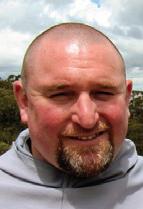

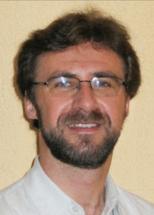


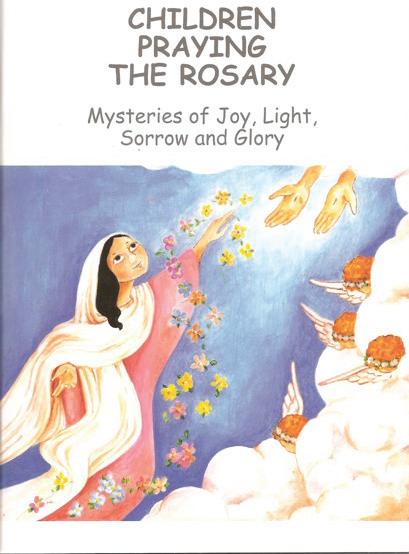


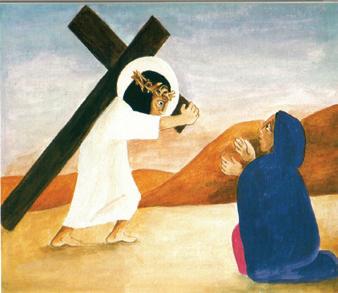

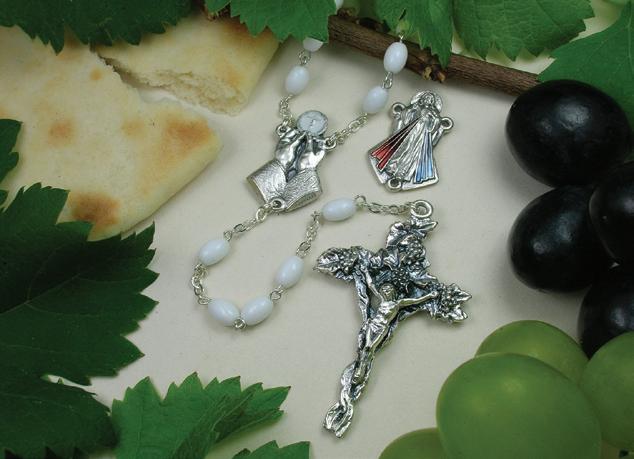



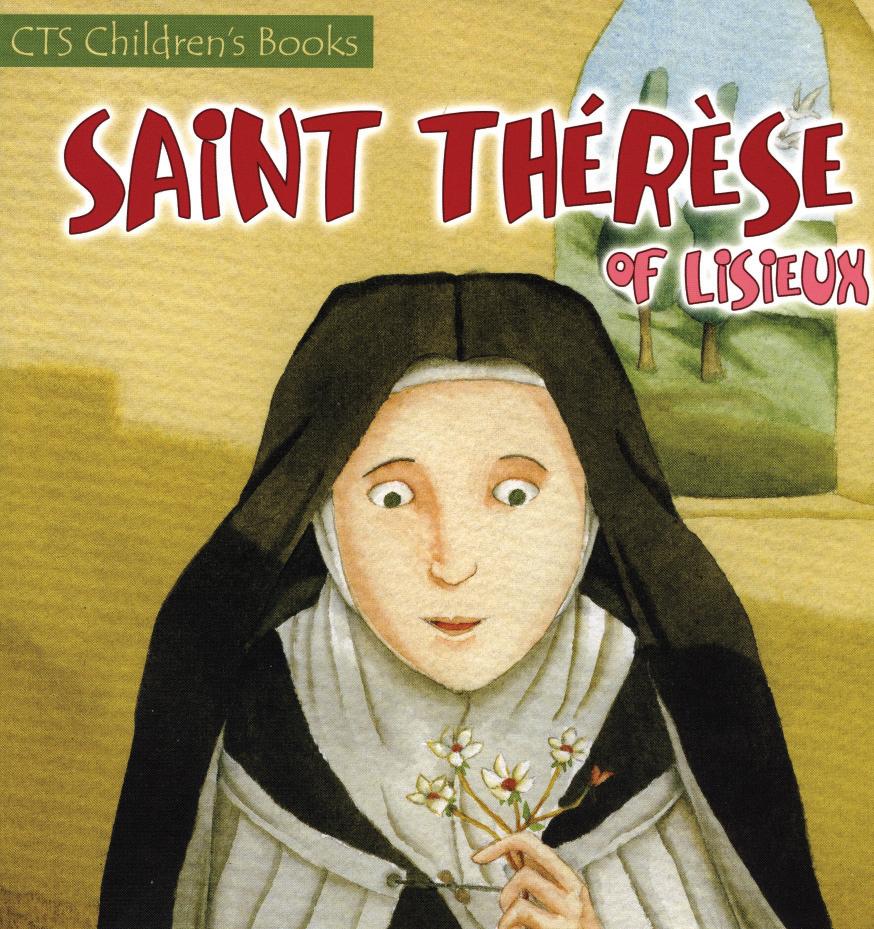



CTS Children’s Books
RRP $10
The life of St Thérèse of Lisieux, her childhood with her sisters and her love for the consecrated life. Get to know her ‘Little Way’ which is a simple way to learn to love Jesus and our neighbours.
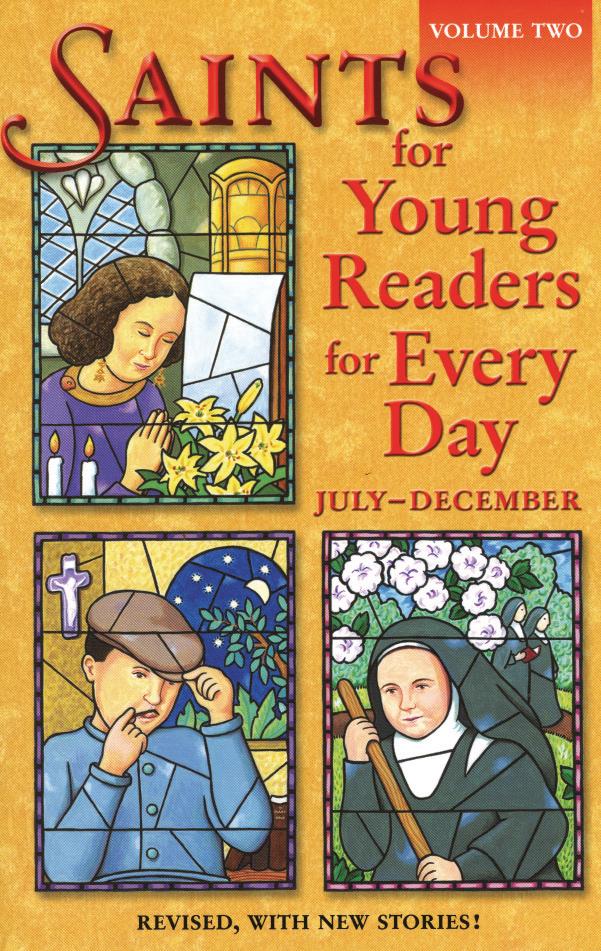




Rev Fr Lawrence G Lovasik, SVD
RRP $20
Popular stories with professional illustrations from the Old and New Testaments.
January - June and July - December
RRP $35
Young readers aged 9 to 11 will thrill to awe-inspiring tales of faith, courage, and love for God … and will vastly enjoy making a new friend every day! This immensely popular Saints for Young Readers for Every Day is back—newly revised, updated and better than ever! Each volume contains the life of a saint for every day of the year, from January through June in volume 1, and from July through December in volume 2. These books offer stories of a wonderful array of saints and blesseds: women and men, teenagers and children, of every ethnicity, age, and situation of life imaginable. You will meet saints from every nation and race, from centuries long past, right down to more recent times. You will come to know saintly kings and workers, queens and housemaids, Popes and priests, nuns and Religious brothers. They were doctors, farmers, teenagers and children. These great but humble men and women prayed and worked and never gave up trusting in Jesus. You can be like them, too.
John & Beth Viatori
RRP $6
For many children, the experience of prayer in the family shapes their attitude to prayer and faith for the rest of their lives. For parents, insecurity with their own prayer life and the practical problems posed by small children or teenagers can make the practice of prayer at home seem impossible. This booklet gives practical advice on how the home can become an authentic school of prayer.
At Baptism, a very great task is entrusted to parents by the Church: namely, to pass on the living faith to their children.What does this involve, and how can parents work together to meet their responsibilities. This booklet explores what kind of faith we are to pass on to our children, and then gives practical help on how to best give children a positive, rich and complete experience of Catholic Christianity.




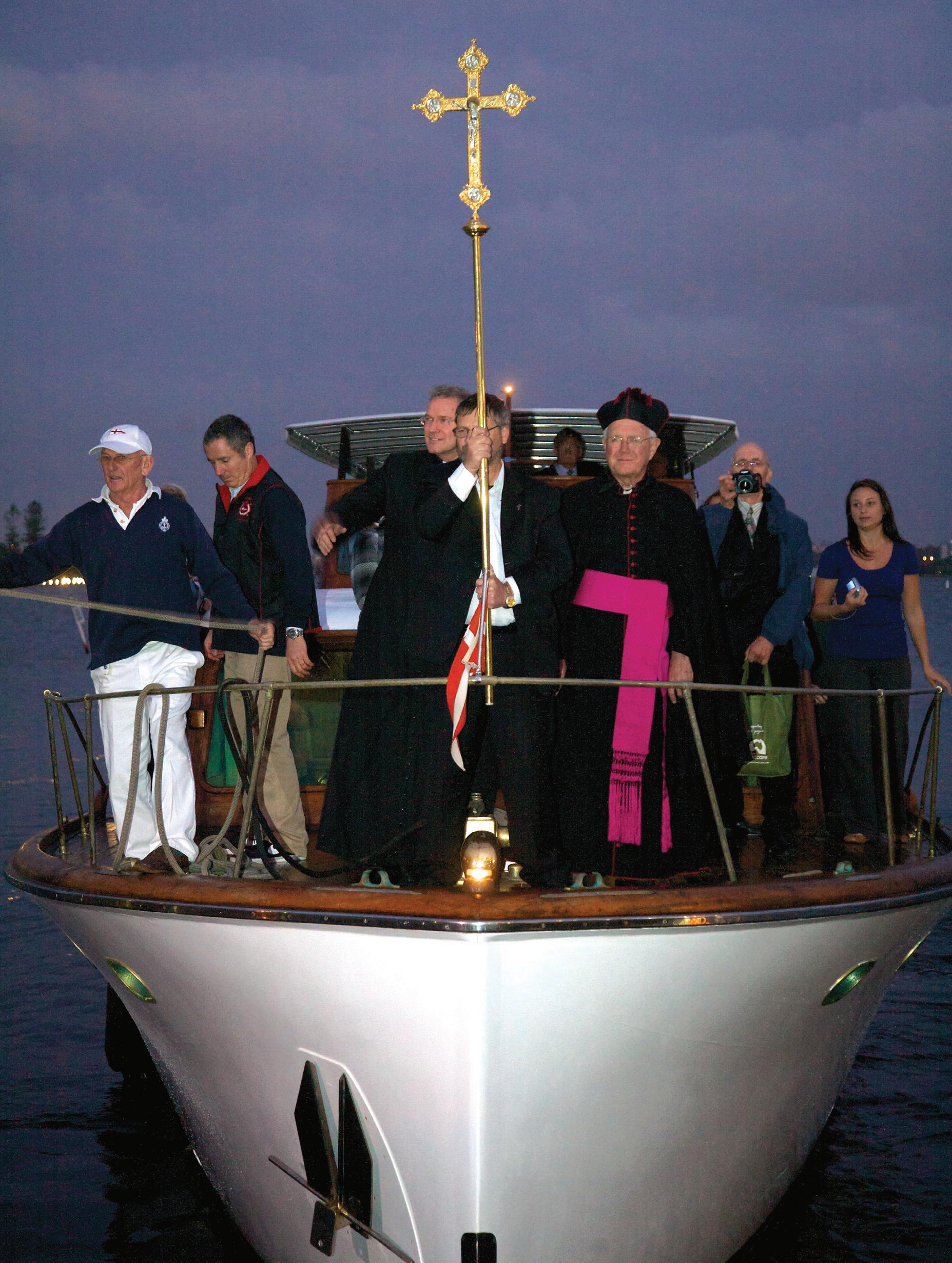





When Bishop Brady arrived in the Swan River Colony it was in a boat built a long way from Australian shores. And so it was for Bishop Brady’s return as the Bishop’s remains were ferried across the Swan River by the Saratoga, built in Seattle in 1957. Bateman parishioners and Saratoga owners, Jim and Leonie Brown, had been approached by someone at their yacht club who had heard Brady organisers were looking for a suitable vessel.
The couple bought the boat in Melbourne in 2007 and trucked it across the Nullaboor before restoring it to its current glory in Perth.
Jim Brown said that whoever put their name forward probably made the connection between himself and Cathedral Dean, Mgr Michael Keating.
Mr Brown has been on several pilgrimages with Mgr Keating, including a trip to Jordan and Israel earlier this year.
“He’s a good leader and gets very good guides and is himself very knowledgable,” Mr Brown said of his former parish priest.
Mgr Keating and the Brown’s were joined on board the Saratoga by Leonie’s 15 year old Godson, Kane and his Grandmother, Elaine.
A recent convert to Catholicsim, Kane was sporting the blaiser of his school, CBC Fremantle. ALL PHOTOS: GRAHAM HALL, PHOTOGRAPHER

On 14 April last year, The Record devoted a significant part of its edition to an examination of the phenomenon of clerical sexual abuse. That edition of The Record scrutinised the Church’s response to the issue - which is meant to be one of the functions of Catholic media. It also did something unexpected - it scrutinised the media’s reporting of abuse. It was potentially a dangerous moment for the paper. The genesis for that special edition was not so much the high profile of abuse as a media issue over the last decade as the specific allegation made by the New York Times - taken up and run globally by most of the world’s mediathat Pope Benedict XVI had not only known about the phenomenon but covered it up. The current conflict between the Irish Government and the Vatican echoes this theme and makes revisiting the issue relevant.
The New York Times’s allegations proved to be without foundation and the paper’s reporting, which could have been truly important, fair, objective and factual was wasted in the interests of shock-value publishing built on jettisoning traditional checks used by journalists to verify facts. Without seeking to deny or marginalise the reality of the problem that crept into the Church in the form of sexual abuse, it is now possible to authoritatively state that the 2006 UN Study on Violence against Children provides vital new information on this subject. In short, the study shows that a problem the media has innately desired to treat as especially ‘Catholic’ in nature, is actually global and societal.
Compiled over several years of research between 2002 and 2006 by independent expert Paolo Sergio Pinheiro, the study found that as many as 150 million girls and 73 million boys are raped or subject to sexual violence each year. In other words, sexual abuse of minors and children is at global pandemic levels. The figures are staggering and help to put into some perspective the scale of the problem so widely reported in the Catholic Church; Italian sociologist Massimo Savigne writing on 13 March last year pointed out that, in the US, 4,392 priests out of more than 109,000 were accused over a 52 year period from 1950 to 2002 of sexual relationships with minors, with civil tribunals finding more than 100 guilty. Cases involving paedophilia appear to have run at about one per year over that period. The 2009 Ryan Report produced in Ireland used justifiably harsh language to describe the handling by bishops of known cases of abuses. It referred to 253 allegations of abuse against boys and 128 cases against girls over several decades.
PO Box 3075
Adelaide Terrace PERTH WA 6832
office@therecord.com.au
Tel: (08) 9220 5900
Fax: (08) 9325 4580
What is so disturbing about the UN report, by contrast, is the scale of the problem. Among the other information uncovered by The Record was:
• The UN report noted that the World Health Organisation estimated between 100 and 140 million girls and women in the world had undergone some form of female genital mutilation and/or cutting.
• UNICEF estimates published in 2005 suggested that in subSharan Africa, Egypt and Sudan, 3 million girls and women are subjected to genital mutilation and/or cutting every year.
• International Labour Organisation estimates indicated in 2000 that 1.8 million children were trapped in prostitution and pornography and 1.2 million were victims of human trafficking.
Since 2000, the world’s media attention has been glued to the Catholic Church on the issue of sexual abuse, effectively increasing pressure on the Church to come to grips with the issue. There have been good aspects to this. What has not appeared in the media, however, is a contextualisation of the problem or an acknowledgement of the true, wider extent of this phenomenon. That this aspect of a pandemic can be ignored by the media so consistently is equally troubling; in a real sense the media have become as blind as the bishops who mishandled abuse. Therefore the consequences will be the same.
The overview of studies conducted in mainly developed countries found that between 7-26 per cent of women and 3-29 per cent of men reported sexual victimisation during childhood, with girls being abused an estimated 1.5-3 times the rate for males. Most abuse, the overview found, occurred within the family circle. Another WHO study of both developed and undeveloped countries showed that between up to 21 per cent of women reported being sexually abused before the age of 15 by male family members other than the father or stepfather.
In March 2010, Marta Santos Pais from the office of the Special Representative of the UN’s Secretary General on Violence Against Children spoke on a follow-up study to the 2006 report. She described a study “on sexual, physical and emotional violence against girls between 13 and 24 years of age” in Swaziland as important because its findings corroborated the 2006 UN report.
“According to this survey,” she said, “one in three girls experienced some form of sexual violence as a child; and approximately nine per cent experienced coercive sexual intercourse before they reached 18 years old.
“The study also revealed that violence is perpetrated by people children know and trust. In the case of sexual violence, 75 per cent of the perpetrators were well known to the victims, including husbands and boyfriends, male relatives and neighbours. Often occurring within the home, sexual violence remains hidden and largely kept as a family secret. Many victims depend on the perpetrators for social and economic support; these, in turn, make use of their status to intimidate children and coerce them to keep silent.”
The above are just some of a barrage of studies which indicate the real extent of the problem. What is not really widely understood yet, but definitely has important consequences for all organisations and governments, is that at a global level it is the Catholic Church alone that has basically cleaned up its act - radically. The question is, when will other organisations begin the process of doing the same? If they begin - if - they will find they have a lot of painful work to do.
Ihave just read an extract from your editorial on academic freedom. As a lawyer I am motivated by fairness and justice for all, irrespective of any prejudice. Your editorial confirms that principle in the academic environment. Cardinal Newman established excellent principles that are too often forgotten in current academia. I believe in a persons right to express a view, even if I disagree with that view.
Secondly, as a lawyer I like to (try too) objectively look at facts before I settle on a view and remain open to the (strong) possibility that I may be wrong in my initial view. I try to treat people I meet in that way.
The factual issues around the (non) debate on global warming (as it was once called) are often ignored. More people should actually engage with the facts rather with than rhetoric masquerading as facts. People should ask questions and look for the answers. They may be surprised by the answers they find. Well done on your editorial. A blessing on you
Richard Niven Brooklyn, Wellington New Zealand
The ‘disturbing signs’ are not at the Vatican. I write in response to Neil Smith’s letter (Record, 20th July,


‘Disturbing Vatican signs’) as a way of clarification for other readers.
Firstly, the Eucharist is not merely “the Sacramental re-presentation of the Lord’s last meal with His Apostles” as much as it is the representation of the entire Paschal mystery.
Although “our post-conciliar Catholics have not been troubled by the liturgical language to which they have grown accustomed,” we cannot doubt the principle ‘lex orandi, lex credenda.’ As there were “notso-subtle theological differences” between what the Council Fathers approved for the Mass and subsequent translations of the Roman Missal, there have been troubling trends in belief - primarily among lay members of the Church.
The new translations of the Mass will, in fact, be a repairing of the Mass that was given to by the Council Fathers and amended most recently by Blessed Pope John Paul II. I will make a note here that
what was actually discussed in the above mentioned letter were two forms of the same rite, rather then two rites as the author wrote. Both the Tridentine Mass (called the extraordinary form in Summorum Pontificum and Universae Ecclesiae) and what is usually called the Novus Ordo are both legitimate, beautiful forms of the same Rite.
There can be reconciliation between these two forms when they are both practiced fully and as per the rubrics which pertain to them. Of those who assist at a Mass of either form and who are faithful to the Holy Father, there will be no rejection of a “liturgical hybrid” if such a ‘hybrid’ were approved by the Magisterium.
The Church, neither in the Second Vatican Council, nor in any document, letter or other teaching, has asked anyone to return to the Traditional Latin Mass; she has, however, asked that, “In parishes… the pastor should willingly accept … requests to celebrate the Mass according to …the Roman Missal published in 1962.” (Summorum Pontificum Art. 5 §1)
There was also an error in logic in Neil Smith’s letter. Whether or not the effects of a cause are corrupt neither proves or disproves the validity of an argument or the worth of the cause. To say, however, that Einstein’s atomic theory was wrong because it was used to construct an Atom Bomb, is obviously, at best, a stretch, and at worst a fallacy.
Kelly Clark MT HAWTHORNThe well publicized recent death of a well known and loved Aboriginal man deserves more than a moment of reflection, especially from those who care about our community. For cultural reasons I will not name him. During his 44 years he achieved AFI awards and fame as a talented performer. He was known for his charismatic presence on screen and his great smile. Sadly he only got to spend a short time as a teenager with his birth mother before she died and according to reports, he struggled with issues relating to past Government policies. His death was tragic, premature and very likely, avoidable.
His death follows recently on the death of another Aboriginal man in Perth. This man too carried grief, in his case the loss of his son to heart disease. He was much loved by his family and many in the community. He loved Noongar karaoke (Noongaroke) and dancing.
He loved his wife, his children and especially his grandchildren. Aged only 52, he died suddenly at the National Aboriginal and Islander Day of Celebration Ball. A night of celebration for many Aboriginal people in Perth turned into a night of sadness. His sudden death is more typical of many others in the Aboriginal community, in so far as it has been largely unknown in the wider non Aboriginal community. His death too, was tragic and premature.
There is a pattern. We know this. We know far too many Aboriginal men die prematurely, many of these deaths are avoidable. All leave a great number of people they knew grieving. But as a wider community, from leaders and philanthropists to ordinary citizens, do we give a second thought to why and how? What could be done?
The answer on one level is simple. The largest cause of the too many deaths, more than a third of them at least, is cardiovascular
disease. Smoking is the single biggest cause of preventable deaths. So we might be tempted to say impatiently that the answer is simple –get Aboriginal men to see their GPs and take action on a range of their personal health issues.
It’s not that simple, I can assure you. As a GP interested in Aboriginal health, I know our system lets people down. I have tried to encourage Aboriginal men I see to attend to their cardiovascular health. I can think of some men who have chosen to make changes, many struggle.
Perhaps like these two men, history, circumstances, mental health, grief and trauma issues are amongst the major reasons that life goes the way it does. No wonder spending $12,000 per annum in the 1990s for Aboriginal people, the QUIT program has not yet been a great success in the Aboriginal population.
Some facts explain a little. Class is a killer. Men at the top of the ladder live longer than those further down the social hierarchy. Many Aboriginal men face unemployment and many have fewer training and education opportunities. The “micro-pressure of racism” and various exclusive social structures and the weight of history burden many men.
Aboriginal men – not all, but generally, have fewer GP consultations than non Aboriginal men (both groups fewer than females), and the consultations they do have are less likely to have a preventive focus.
In other words, they are more likely to be related to an acute problem eg a soft tissue infection, than for a “check up”. At too few of these consultations is the focus on what could be done to prevent a premature death or to address the emotional issues that drive behaviour. And there are just too few consultations. Our services don’t treat people equally. Some Aboriginal men delay presenting with chest pain and die prematurely. Patients have told me
they fear or have actually experienced racism from health professionals and others in the health industry.. There is strong national evidence that Aboriginal men don’t get access to angioplasty and coronary angiography anywhere near the rates they should.
What can be done about all this? We need more community driven approaches, involving Aboriginal men and women, lead by them, with opportunities for healing and heart care. There are some great initiatives, like Marmun pit stop – a health check up for Aboriginal men, run by Aboriginal men. We need a lot more in local communities, especially for healing and cultural strength.
It is time that the people of WA, lead by the Aboriginal community, the Premier, senior ministers and Opposition, the Governor, philanthropists, charities and business leaders, film stars and ordinary people, decide these two deaths and so many like them, should not be in vain. We all need to make the heart and emotional health of Aboriginal men and women a much higher priority.
Next year at this time, on the anniversary of these deaths we need to ask ourselves, what has happened to prevent further deaths? What Aboriginal-lead initiatives to address heart and emotional health will be sponsored that previously have received insufficient support? Who has set up a serious research effort to understand what is the best way to better prevent these adult deaths?
Will we the people, and our government, have taken a small but significant slice of the great wealth we have, to much better ensure all our community, especially the descendants of those who first walked this land, get to enjoy its fruits? We owe it to their families and to all the other families at risk.
Tim Leahy is a General Practitioner and Associate Professor, Aboriginal Health Curriculum at UNDA’s Fremantle campus.
 BY FATIMA MEASHAM
BY FATIMA MEASHAM
The Vatican Observatory is one of the oldest scientific institutions in the world, continuing a tradition of scientific exploration in the Church that stretches back centuries.
Brother Guy Consolmagno laughs when asked whether people ever express surprise that the Catholic Church runs and staffs two observatories, one in Italy and the other in the United States. ‘All the time,’ he replies. ‘One of the reasons we exist is to surprise people.’
Indeed, not many people are aware that the Church has supported scientific research for hundreds of years. Br Guy, who works at the Vatican Observatory, is only one of a long line of scientist-clerics.
This should be no surprise, however. Br Guy points out that science got its foundations in the monasteries and universities run by the Church in the Middle Ages. ‘As late as the 19th century, most scientists were noblemen or clergymen,’ he says. ‘Who else had the time or education?’
One of the Church’s primary fields of interest was astronomy because it helped determine holy days such as Easter. The promulgation of the Gregorian Calendar in 1582, in particular, was made possible by the work of Jesuit astronomer, Christopher Clavius. This is the calendar we use today.
The Jesuit Order has sustained its contribution since, though Barnabites, Oratorians and Augustinians were also initially involved with the Vatican Observatory. In the 1930s, when the facility was reconstituted in its modern form at Castel Gandolfo, it was formally entrusted to the Jesuits. By the 1980s, when light pollution there began to hinder research, the Vatican Observatory Group (VORG) was founded in Tucson, with offices at the Steward Observatory at the University of Arizona.
Fr Chris Corbally, the Vice Director of the Vatican Observatory at VORG, reflects on how he has come a long way from his childhood in Lancashire, England. Where he grew up, night skies were particularly clear and unobstructed. The area was
also prone to thunderstorms. ‘One way or another, I was looking up,’ he says. In those days, young lads could go straight from school to join the Jesuits. It was an idea that wouldn’t go away, and he knew that he could pursue astronomy within the Order. ‘You’ll find the same with Guy,’ he smiles. ‘God nagged Guy.’
‘I had all sorts of marvellous turns which got me to the right place in the end,’ admits Br Guy. He finished high school in Michigan the year that man landed on the moon and became drawn to astronomy, though he observed that ‘the smart kids did Latin and Greek.’ He attended Boston College until he learned, through a close friend studying at the Massachusetts Institute of Technology (the renowned MIT), that it had the world’s largest science fiction collection.
‘I transferred so I could read the science fiction,’ he quips. He majored in planetary sciences and worked as an astronomer for five years. When he started questioning his
1582 – Pope Gregory XII
1774 - 1878 – The Observatory of the
1789 - 1821 – The

1827 - 1870 – The Observatory of the
1891 – Pope Leo XIII
1981 –
1993
work against the context of real suffering in the world, he joined the Peace Corps and went to Kenya to teach. There, he discovered that ‘people who were starving were also hungry for the intellectual life. What’s in the sky? What does it all mean? Who are we? Where do we all come from?’
Not too long after he returned to the US, he joined the Jesuits and was promptly assigned to the Vatican Observatory.
Today, these men, who became Jesuit astronomers through different paths, conduct significant research that is widely referenced by the scientific community.
Fr Corbally, for instance, co-wrote Stellar Spectral Classification, which is considered a definitive catalogue of stars based on temperatures and other characteristics.
His recent focus has been on peculiar stars, those that show characteristics of older generation stars but are found among younger stars.
This study is expected to reveal more
information about the life cycles of stars and galaxies.
Br Guy, on the other hand, has focused on meteorites and their physical properties, including density and magnetic ferocity. Initially, this ‘looked like a fun thing to do’ but it has actually led to a deeper understanding of meteorites, asteroids, and how the universe is formed. He curates the meteorite collection at the Observatory, one of the largest in the world, with over a thousand pieces.
Apart from research and publication, a major feature of Fr Corbally and Brother Guy’s work involves speaking at conferences. On such occasions, Br Guy has taken to wearing his clerical collar and MIT ring. ‘I enjoy playing with expectations,’ he says. ‘It puts a lie to the idea that science and religion are opposed.’
For him, the two run parallel. ‘My science tells me that God acts through beauty, Please turn to Page 11
 established the Gregorian Calendar following a process of scientific study of astronomical data.
Roman College in operation.
Specula Vaticana operated in the Tower of Winds within the Vatican.
Capitol in operation.
formally refounded the Specola Vaticana (Vatican Observatory) on a hillside behind the dome of St Peter’s Basilica.
1930s – Vatican Observatory re-opened at Castel Gandolfo, outside of Rome.
Vatican Observatory established a second research centre in Tucson, Arizona.
– Construction completed of the Vatican Advanced Technology Telescope (VATT) on Mt Graham, Arizona.
established the Gregorian Calendar following a process of scientific study of astronomical data.
Roman College in operation.
Specula Vaticana operated in the Tower of Winds within the Vatican.
Capitol in operation.
formally refounded the Specola Vaticana (Vatican Observatory) on a hillside behind the dome of St Peter’s Basilica.
1930s – Vatican Observatory re-opened at Castel Gandolfo, outside of Rome.
Vatican Observatory established a second research centre in Tucson, Arizona.
– Construction completed of the Vatican Advanced Technology Telescope (VATT) on Mt Graham, Arizona.
The “digital age” generation flocking to Madrid for World Youth Day in a couple of weeks time will be made aware of one of the darker sides of digital culture: the flourishing business of Internet pornography.
Thanks to an award-winning documentary created by Anteroom Pictures in New York City, the pornography industry will be exposed and analysed before the young audience.
Out of the Darkness features the story of Shelley Lubben, a former sex worker and porn star who left that life behind and converted to Christianity.
The film, winner of the Mystery of Love award at the 2011 John Paul II International Film Festival in Miami, will have an online screening with Morality in Media in early August. After that, it’s on to World Youth Day in Spain for a screening on 17 August.
ZENIT caught up with filmmaker Sean Finnegan, the director and producer of Out of the Darkness to talk about the film’s message.
What was the inspiration for creating this documentary?
I had been working for another
film company involved in producing Christian and Catholic films. Someone mentioned the growing significance of pornography and I began to investigate the topic. I discovered that a great deal of work had been done on the issue, and several films dealt with the topic.
However, the majority of those films focused on either addiction or the First Amendment, while none of them looked at the primary victim of pornography - the woman. I felt that this was a unique way to approach the pornography debate.
Of course, films that explore the issues of addiction and free speech are important, but I wanted my film to remind people that underneath it all, what we are really talking about are human beings created in the image and likeness of God. I wanted to use film, primarily a storytelling vehicle, to put that human element at the heart of the story.
I began researching the topic, looking for someone who had been involved in pornography but escaped. Pretty quickly, I discovered Shelley Lubben and her incredible story. I realized that not only was her story worthy of being told, but it highlighted many other
problems in our society that I know are closely linked to pornography - the sexualisation of children, loneliness, loss of faith, etc.
I wanted Out of the Darkness to include people who could talk about these issues and highlight some of the historical and psychological conditions that exist or have existed, which have allowed pornography to prosper in this country. The project grew to include Dr Judith Reisman, a wellknown expert on Alfred Kinsey, Hugh Hefner and the history, growth and dangers of pornography, and Dr Richard Fitzgibbons, a Catholic marriage counsellor working in the field for decades. I had also long been aware of Mark Houck’s addiction story and his ongoing work fighting against the evils of pornography, and thought his presence would enhance the overall story as well.
would get bogged down by facts and statistics, so I worked hard to keep my storytelling focus primarily on the individuals involved. I simply allowed each of them to tell their story, which allows the audience to engage and become emotionally invested, and also to see more clearly how each story is intertwined and interconnected
“GK Chesterton wrote that sometimes something is so big that we can’t see it. That’s how I feel about the sexual utilitarian philosophy”
with the other. One of the most eye-opening elements of the story, as it developed, was the information presented by Dr Reisman. She has spent decades trying to expose the story of the real Alfred Kinsey, but hers has been a lone voice in our academic culture.
his conclusions and the sexual revolution they spawned.
Can you tell us some details about the making of the documentary?
The documentary was made with very few people on a very low budget. We didn’t want that to keep us from producing a high quality film, so we decided more or less to take our time and make sure the film looked good, sounded good, and flowed properly. We knew that just because we had an important story, there was no excuse for producing a low quality product. In fact, the significance of the topic demanded that all the external elements be above par so as not to take away from the story.
One of my fears was that the film
Kinsey’s work has influenced so many different aspects of our society, and yet so few people have really looked at his work. Rather than focus on the disturbing way he came to, or perhaps even invented, his conclusions, the social sciences and academics instead focused on
We did hours and hours of interviews with each participant, and there was enough material for multiple documentaries, but we committed to focusing on the human element within each story. I cannot say how the making of the film impacted on the others, but for me it showed how pervasive the sexual utilitarian philosophy has become. Pornography has affected everyone, in one fashion or another, in every demographic and station of life.
GK Chesterton wrote that some-
Amidst calls to force priests to divulge confessions, a Sydney Bishop says confessors should take up the reins of justice and mercy
BY AUXILIARY BISHOP JULIAN PORTEOUSIn recent days, there have been calls in Ireland and Australia to remove the legal privilege given to confessors which exempts them from the obligation to report to civil authorities a confession of child abuse. In this article, I will explore this issue and suggest some ways in which confessors can fulfil their child-protection obligations while remaining faithful to their religious duties.
At present, NSW civil law protects a priest from having to disclose material revealed in confession. In NSW, the 1989 Evidence (Religious Confessions) Amendment Act, modified thethen law to exempt a priest disclosing in a civil court what he had heard in confession. This became n27 of the Evidence Act 1995 and states: “A person who is or was a member of the clergy of any church or religious denomination is entitled to refuse to divulge that a religious confession was made, or the contents of a religious confession made, to the person when a member of the clergy”.
It is important to remember that other professions are granted exemptions from disclosure, for example, legal practitioners. There is always a value involved; the judgement is made that the value in protecting these privileged communications outweighs the common good.
Given the Church’s often inadequate efforts in recent years to
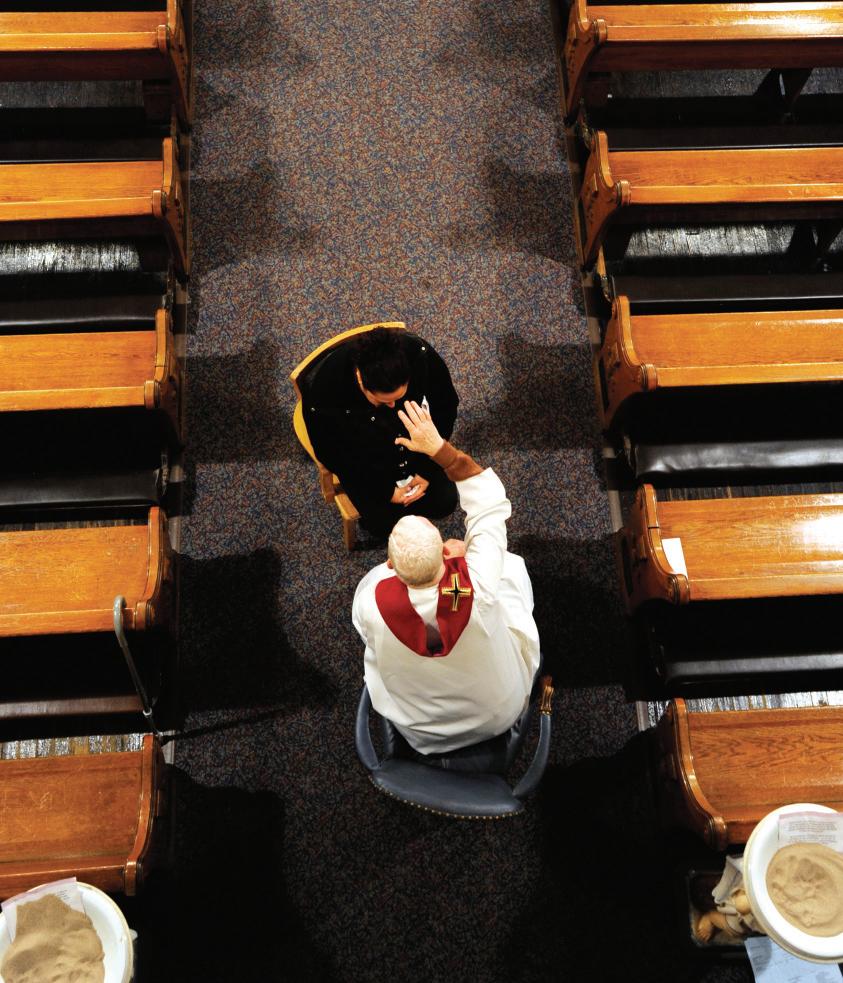
protect children here and in other countries, it is not surprising that there will be calls to remove protections presently given to the Church, in this case the privileged communication of the confessional. This is an issue that the Church must confront as we co-operate with civil agencies to protect children.
However, there is a special aspect to what happens in the Sacrament of Confession that sets it apart from other types of communication. What happens within Confession is ultimately something between the penitent and God. It is called the “internal forum.” No law
can exempt a priest from maintaining the “seal of Confession.” He is simply never free to reveal to anyone in any circumstance what he has heard in Confession. Nor can he identify the penitent. The Church considers this a matter of divine law. In other words: this duty not to break the seal of Confession comes ultimately from God. However, it would be wrong to assume that a penitent can exempt himself from God’s laws and civil laws by going to Confession.
First of all, Catholic doctrine is quite clear that a sin cannot be forgiven unless there is true sorrow
arising from a conversion of heart. This necessarily involves a firm commitment not to commit the sin again. If this attitude of heart is not there, then a priest should postpone absolution until the penitent has “come to his senses”, the phrase used in the parable of the Prodigal Son in Luke 15.
Further, the Church’s law demands that a priest’s role is not merely a passive one.
Rather, with a sin such as abuse, the priest can and must confront a penitent. In some circumstances, the priest can and must withhold absolution.
This is expressed in canon 978 §1 of the Code of Canon Law. “In hearing confessions, the priest is to remember that he is equally a judge and a physician and has been established by God as a minister of divine justice and mercy, so that he has regard for the divine honour and the salvation of souls.”
In the context of sexual abuse, and indeed any serious crime, it is opportune once again to re-evaluate the priest’s role as a “minister of divine justice,” whose concern must be not just for the penitent, but the “salvation of souls” in the wider community.
The priest, then, has an obligation to confront an abuser and to demand that he take whatever steps are necessary to repair the damage caused by his sinful – indeed evil - acts. This is more than giving advice: it involves a powerful challenge in the name of God and the Church for the protection of anyone who has been harmed and who is likely to be harmed. And a priest receiving the confession of another priest would advise him to face the issue and take it to the relevant authorities.
There is another sometimes overlooked aspect of the sacrament that is relevant here; the penance given to the penitent. Canon 981 says that “The confessor is to impose salutary and suitable penances in accord with the quality and number of sins, taking into account the condition of the
penitent. The penitent is obliged to fulfil these personally.”
The words “salutary” and “suitable” here are important. The penance for a serious sin, indeed in this case a serious crime, should not be a pro forma “three Hail Marys” or something similar, but a serious action proportionate to the crime that is aimed at repairing the damage.
This might be an opportune time for the Church as a whole to revisit the notion of what is sometimes called the “reserved sin”. This refers not so much to reserving a sin but to withholding absolution. In other words, a priest in Confession would refuse to give absolution unless and until the penitent takes practical steps to repair the harm.
The priest could insist, as a condition for absolution, that the sinner – priest or other Christian – take practical steps to report the abuse to the relevant authorities, Church and civil.
The Church’s laws could be changed to include such a provision, just as the Church’s laws have been strengthened in a number of ways in recent years as part of its commitment to protect children and minors.
The seal of Confession is a sacred obligation assumed by priests and cannot be broken. If the civil law demands that a priest be coerced to break the seal, he would have to refuse as a matter of conscience. Having said that, a priest who has understood properly the Church’s doctrines on sin and the remedies provided in the Sacrament of Confession has many options at his disposal to confront an abuser with his crime and to begin to repair the damage.
As a Church, we can and must continue to recognise our civil responsibilities and work with civil agencies to protect children. I hope that I have been able to show here that the Church’s doctrines and law regarding the Sacrament of Confession can be an instrument for child protection.
times something is so big that we can’t see it. That’s how I feel about the sexual utilitarian philosophy. It is everywhere. And the damage it has done is so extensive that we have simply accepted it a priori, assuming that it’s just the way our culture is and has to be. But that’s not true, and we wanted our film to put a spotlight on the personal stories of those whose lives have been damaged by this misguided assumption.
Another interesting thing we experienced while making the documentary was the revelation that we do not have to accept our culture as it is handed to us. We can actually help make culture, and improve it, and create art that appeals to the higher things and greater good. Telling a story with all the elements of degradation, loss, sin, grace, conversion and deliverance, is a genuinely eye-opening, and heartchanging experience. I hope Out of the Darkness conveys that to audience members, and leaves them as moved and motivated as it does those of us involved in its production.
How has it influenced audiences? What kind of feedback have you received?
Since we are self-distributing the film, we have taken a nontraditional approach to the challenge of getting the film seen. To that end, we have entered Out of the Darkness in a number of film festivals, Christian and secular, and aggressively reached out to Catholic and Christian Churches, men’s groups, civic groups, Catholic/Christian TV networks and college campuses to secure screening licences. This is a slow and time-consuming process, but it allows us to build relationships with each organisation that has shown the film, and it creates a strong word-of-mouth campaign that results in growing enthusiasm for the film.
Audience response to Out of the Darkness has been very strong and very positive. Young adults in particular have been moved by the film’s message of love and

hope. Out of the Darkness confirms what most young people already intuit: that they have been lied to about the promises and freedoms of sexual liberation, and that using others - in relationships or pornography - is a damaging process to everyone involved.
Most audience members are also grateful for the fact that we produced a documentary on pornography that is not voyeuristic, sensational or risqué in any way. By focusing on the personal stories of those involved in or affected by pornography, we avoided the need for objectionable material. Instead, we introduced a human element
to pornography that gets audience members to emotionally engage and respond to the film.
All films generate negative feedback, and though we have received nearly universal praise from most of our audiences, there are those who find Shelley’s story hard to believe - or at least hard to believe it isn’t elaborated for effect! But as Austin Ruse wrote in his review of Out of the Darkness: “She [Shelley] is not without her enemies: all the right ones.”
Shelley and her story are a real threat to our currently sexsaturated culture, and we take critics of our film seriously and
in good cheer. Others object to the under-emphasis we put on Mark Houck’s story of addiction and recovery. Surely more people relate to his story than Shelley’s journey into the sex industry. Even so, we wanted to introduce people who may find themselves in Mark’s shoes to the idea that the images they are looking at damage them on some level, and on another level damage the person in the image!
Tell us about the JPII Film Festival award it received.
Out of the Darkness was the opening night film at the John Paul II International Film Festival
in Miami this past February. The audience loved the film’s powerful message, and it was awarded “The Mystery of Love Award” as the film that best represented the festival’s theme.
Out of the Darkness is also going to be screened as part of the cultural programme at World Youth Day in Madrid this August. It’s a great opportunity to introduce our film to a young and excited audience interested in living a life of the Gospel.
Also, we are working with Morality in Media to do an online screening on 4 August. People are invited to participate in their “Be Aware” campaign on their web site.
What do you hope this documentary will achieve?
I hope Out of the Darkness helps expose the lie that pornography is a “victimless hobby” and a “harmless pastime.” I hope audience members remember that human beings - both users and producers - are really hurt by pornography and the sexual utilitarian philosophy. Of course, no single film is going to turn things around on its own, but I hope that some people, after seeing this film, will think twice about clicking the mouse, purchasing a magazine, or using another fellow human being sexually, and with complete disregard for their wellbeing. I hope Out of the Darkness will help them realise that a real person had to undergo incredible suffering to produce the material they are about to watch.
I also hope that viewers become more aware of the important work of Dr Reisman.
Alfred Kinsey is a hugely important 20th century figure, yet very few people even know who he is. There has been an upsurge in awareness of Kinsey and Dr Reisman’s work in recent years, but only by unmasking this man and his research can we really begin to reclaim our culture. I am very heartened that young people in particular have responded very strongly to the film and to Dr Reisman, and I hope Out of the Darkness helps to further that trend. ■

Continued from Page 9 not superstition. My religion tells me that there is something wonderful here to study. I know going in that it was made by a loving God, who made it in a sensible way and made it worth studying. The ultimate goal in both cases is to get closer to truth.’
He likens this interaction to a dialogue between a husband and wife. ‘They have to be in love with each other, and yet each of them has to be independent and free.’
Fr Corbally agrees. ‘They have to be in dialogue because God’s truth is essentially one. Faith is one way of being in contact with God, and certainly the reflection on faith, which is theology. The reflection and understanding of our world – science – is another way of approaching truth. There can’t fundamentally be an opposition between them.’ He adds that both respond to ‘hidden-ness’ or mystery in the same way: ‘The nature of faith is to keep growing. The nature of science is to not be complete.’
According to Br Guy, the opposite of both science and faith is actually certainty. ‘No scientist is certain,’ he remarks. ‘If we were
certain, there would be no more reason to do science.’ He asserts that faith is not the same as certainty, that it is more accurately the response to an experience of God.
For Fr Corbally, his experience of God is one of surprises. He refers to the puzzle presented by peculiar stars, which he suspects will raise more questions even when it is solved.
“That tells me something about the Creator, how we can come partially to know and yet there’s also an unknown.”
Br Guy adds the word ‘joy’ in describing his experience as a scientist who believes in God, “As in CS Lewis’ book, Surprised by Joy. That’s the life of a scientist. It’s like one of those delicious moments of prayer that you can never force God into.
‘It just happens and you know that you’ve been touched by the hand of the Creator ... A sense of wonder is, after all, merely seeing the universe in its proper perspective.’
This article first appeared in the Winter 2011 edition of Australian Catholics
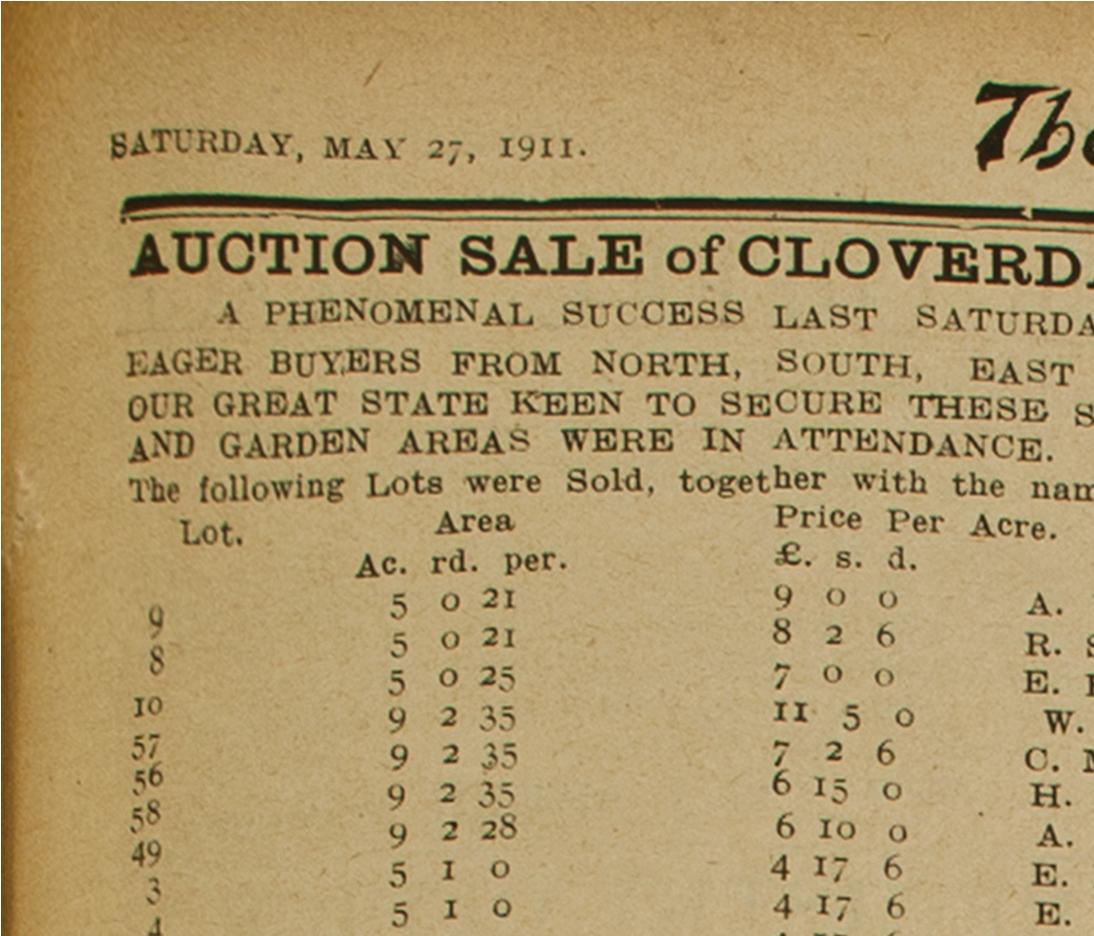
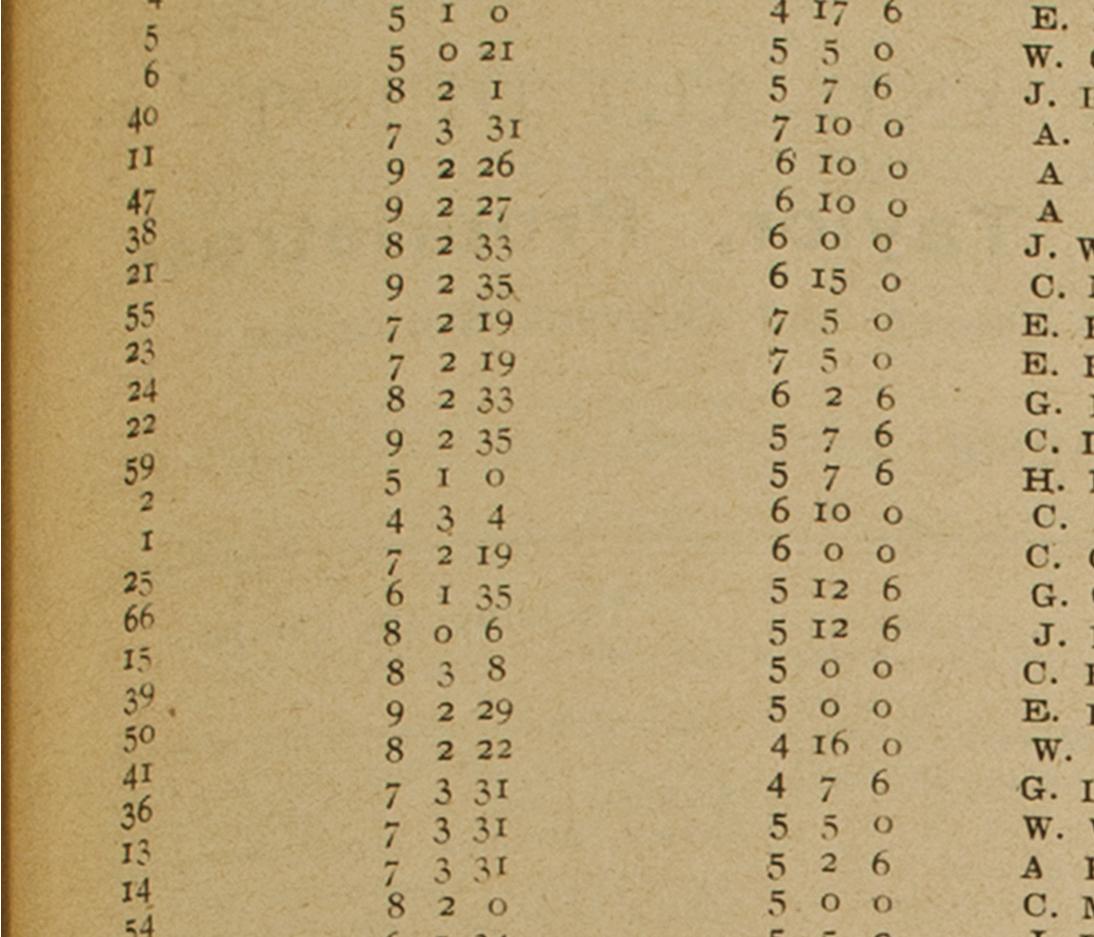


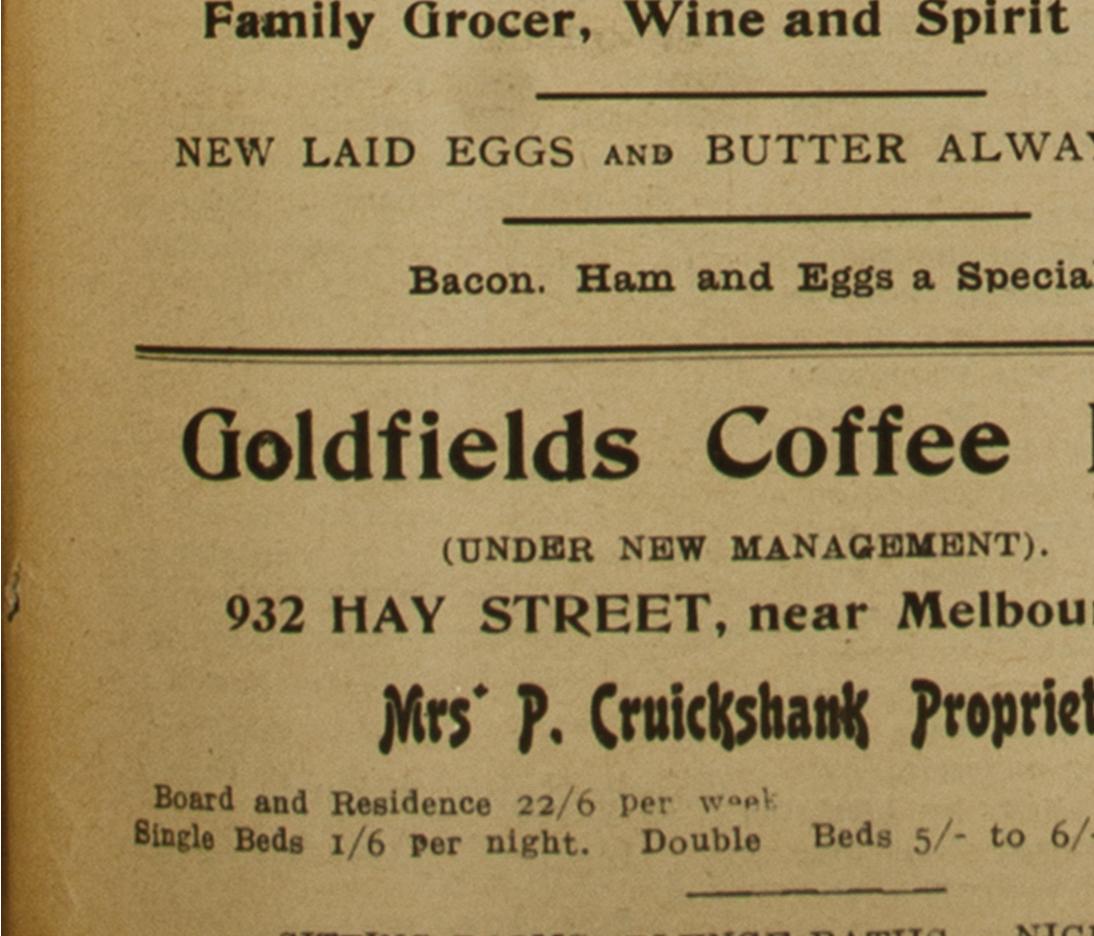



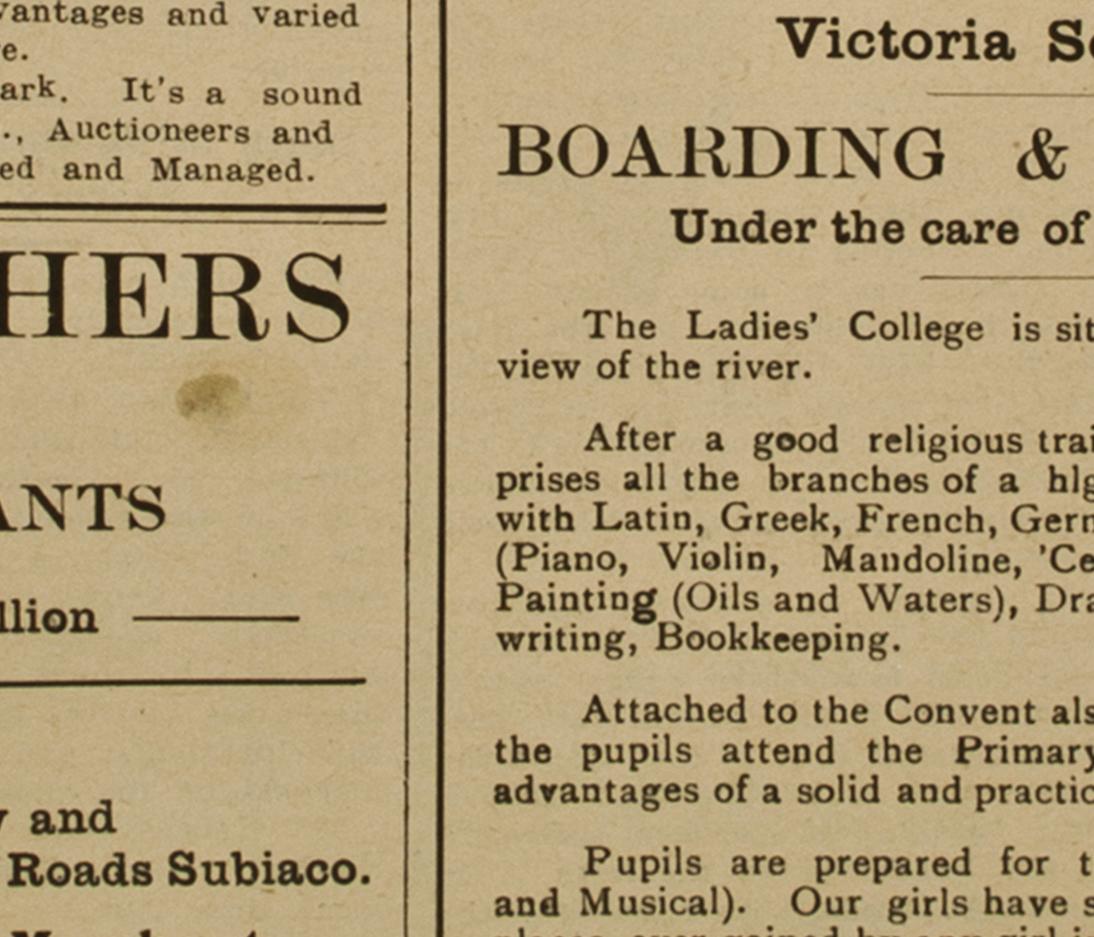


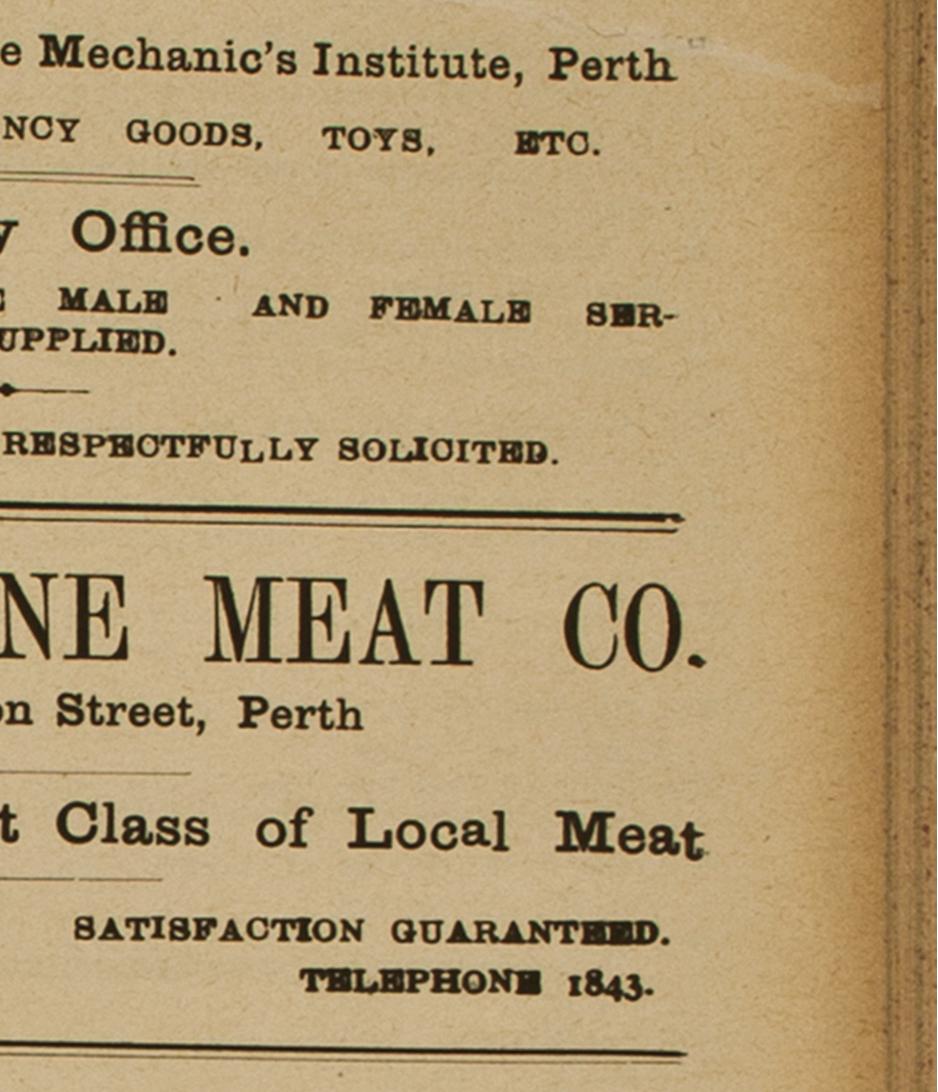



The Marian Movement of Priests is widespread throughout Western Australia. Weekly or monthly, hundreds of small prayer groups meet in city and country churches or homes to pray “the cenacle”, consisting of the rosary, prayers for the Holy Father, a reading and an act of consecration to the Immaculate Heart of Mary.
This movement began in 1972 when an Italian priest, Fr Stefano Gobbi, was praying at Fatima for some friends of his who had left the priesthood and were organising associations in rebellion against the Church’s authority. He began to hear an interior voice calling him to trust in the Immaculate Heart of Mary.
Through these ‘interior locutions’ he was led to invite priests and people to form a new movement that would pray for priests. It was a time of confusion in the Church. Tens of thousands of priests were leaving the priesthood and others were engaging in scandalous behaviour, the extent of which has only come to light in recent years.
Founding the Marian Movement of Priests was Fr Gobbi’s response to what he regarded as devilish attacks on the priesthood. The members were invited to meet
in cenacles of prayer and to be loyal to the Holy Father and the teachings of the Church.
In the years that followed, this small and physically unimpressive priest travelled the world many times and spoke to many thousands of priests, bishops, religious and lay people. Today millions of people meet in prayer cenacles throughout the world and hundreds of thousands of priests and bishops have joined the movement. The messages received by him are published in the book To the Priests, Mary’s Beloved Sons
Pope John Paul II was a great supporter of the movement and met regularly with Fr Gobbi to hear of its progress.
Each year in Italy a large number of priests and bishops made an annual retreat with Fr Gobbi, which was always held around the Feast of the Apostles Peter and Paul as a sign of loyalty to the successor of Peter. In recent years the retreat was held at the Sanctuary of Merciful Love at Collevalenza, in northern Italy, not far from Fr Gobbi’s home town of Dongo.
This year Fr Gobbi had a heart attack just before the beginning of the retreat. More than 300 bishops and priests, including Cardinal
A ceremony admitting a Perth man to candidacy for the Priesthood would not have been seen in Perth in many years
ARCHBISHOP Barry Hickey celebrated a Pontifical High Mass at St Anne’s Church, Belmont, in honour of St Anne on July 31 and bestowed on seminarian Luke Makaritis the First Clerical Tonsure and Minor Orders in the extraordinary form of the Roman rite.
Archbishop Hickey, while wearing his mitre, carried out the medieval tradition of the Tonsure. He cut Mr Makaritis’s hair in five places in the shape of a cross, symbolising the five wounds of Christ.
The First Tonsure is the extraordinary form’s expression of the Admission to Candidacy in the novus ordo.
The archbishop then invested Mr Makaritis with the surplice, praying: “May the Lord clothe thee with the new man, who is created according to God, in justice and true holiness.”
After the Gloria was sung, the archbishop bestowed on Mr Makaritis the Minor Orders of the Ostiariate or Porter and of Lector or Reader.
After this bestowal of the Minor Orders, Mass continued as usual and the archbishop preached on the Gospel taken from Matthew 13: 44-52.
Jesus compared the kingdom of heaven to a pearl of great price, to a treasure that is found in a field and to a dragnet full of fish. These
Ivan Dias from India, gathered as usual in Collevalenza. Fr Gobbi was unable to attend. His end was near. He died at 3pm, the hour of Divine Mercy, on the Feast of the Apostles Peter and Paul.
His body was taken to the retreat centre where a Solemn Requiem Mass was celebrated, led by Cardinal Dias and concelebrated by over 300 bishops and priests. A remarkable feature was that, after the two-hour service, the bells continued to ring loudly and uncontrollably for many minutes. The nuns who look after the shrine could not explain it.
Fr Gobbi’s body was then taken to Dongo for the burial Mass. This was held on the Feast of the Immaculate Heart of Mary – a feast pivotal to the movement. He will eventually be interred in the shrine of Our Lady of Tears in that town.
His passing is both a cause of sadness and a cause of joy for the members of the MMP, who are sorry to lose him on earth but confident of his intercession in Heaven
Fr Gobbi said the Mother of God had told him that after his death no one would replace him in his role as animator of the MMP; instead Our Lady herself would be in charge.
In his last will and testament Fr. Gobbi wrote: “As I have con-

secrated every moment of my life, in the same way I consecrate to the Immaculate Heart of Mary the moment of my transition from earth to heaven and from time to eternity. To all those belonging to the
Marian Movement of Priests and the Marian Movement, I promise my special protection and particular help from paradise, which I hope to enter by the mercy of the Lord and with the help of your prayer”.
parables help us understand eternal life, he said.
“The kingdom that begins now is the kingdom that we entered at baptism and it should grow in our hearts and we should change because of the kingdom throughout our whole life until the final judgement and our admission into the fullness of God’s kingdom,” Archbishop Hickey said.
“We already see wonderful gifts and treasures in the kingdom of God: the graces of forgiveness of our sins; the graces that come from belonging to the Catholic community; the graces that we receive every time we receive holy communion in the blessed Eucharist; the wonderful treasure of Mass itself when Jesus’ sacrifice becomes present on the altar.”
Already we had a foretaste of the kingdom of heaven, Archbishop Hickey said, therefore we must be faithful in prayer and recognise the treasure for what it is, so that when we come to be judged Our Lord would say to us: “Come, blessed of my Father, receive the Kingdom that has been prepared for you.”
Originally from Newcastle, Mr Makaritis has been discerning priestly vocation since childhood.
He began studying for the priesthood with the archdiocese of Melbourne nine years ago but left after 18 months to undergo further discernment.
He spent time as a teacher but returned to formation in the Perth archdiocese earlier this year.
He has been on a five-month placement at St Anne’s since April. Now a Minor Ordinand, he will leave in September to go to Rome, where he will continue his studies for the priesthood at the Pontifical University of Santa Croce.

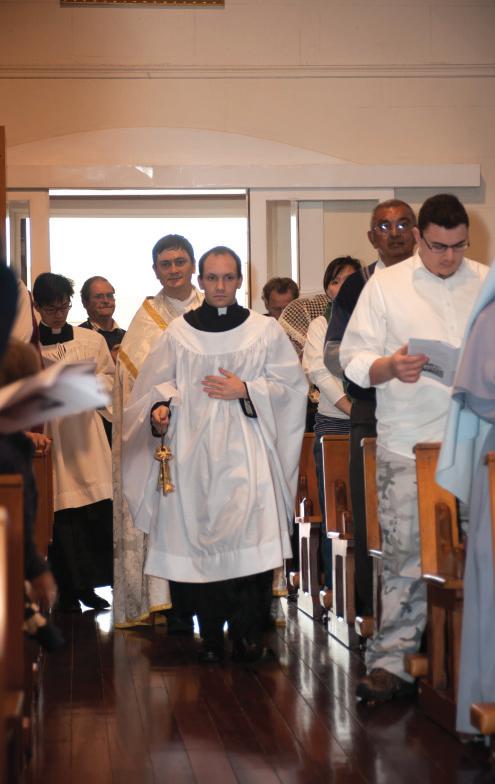
WASHINGTON (CNS) -- The man responsible for the July 22 Norway terror attacks, Anders Behring Breivik, is not only against Muslims but also anti-Jewish and anti-Christian, according to a longtime observer of Norwegian hate groups. Breivik is at least philosophically allied with a loosely organized underground subculture of Norwegians who consider themselves “Odinists and neopagans,” said Jeffrey Podoshen, an associate professor of marketing at Franklin & Marshall College, a liberal arts school in Lancaster, Pa. He teaches classes in business, organizations and society, and Judaic studies. Odin is an ancient Norse god sometimes better known these days as the father of another Norse god, Thor, but in Norse mythology is associated with war, battle, victory, death, wisdom, magic, poetry, prophecy, and the hunt. This subculture, Podoshen told Catholic News Service in a July 26 telephone interview, is “looking at Christianity as Breivik looks at Islam.” After confessing to the shooting massacre of youths at an island retreat and the bombing in Oslo, the Norwegian capital, which together took 76 lives, Breivik in an initial court hearing July 25 pleaded not guilty to terrorism charges. He said he was acting to save Europe from what he described as “Muslim colonization.” Terror activities associated with the neo-pagan subculture “has been going on in Norway for 20 years,” Podoshen said, largely in the form of church burnings. The neo-pagans’ assertion was that “the churches were deliberately built on pagan holy sites, they (church builders) had put a cross on top of the pagan holy site,” which then warranted its destruction, he added. “Their version of Christianity is a lot different than everybody else’s definition of Christianity,” according to Podoshen. “It’s not the type of Christianity that you and I are going to be accustomed to. This is Christianity that has been twisted for their purposes.”

The parish of Notre Dame in Belmont will have an advance celebration of the Feast of Mary McKillop on Sunday, 7 August at the 10am mass.
A highlight of the Mass will be the blessing of a brand new fibreglass semilife-sized statue of Mary McKillop donated by a family in the parish, said Parish Priest Fr Nelson Po.
Morning tea will be held in the Parish Centre after the Mass to celebrate the feast.
The Marian Movement of Priests is widespread throughout Western Australia. Weekly or monthly, hundreds of small prayer groups meet in city and country churches or homes to pray “the cenacle”, consisting of the rosary, prayers for the Holy Father, a reading and an act of consecration to the Immaculate Heart of Mary.
This movement began in 1972 when an Italian priest, Fr Stefano Gobbi, was praying at Fatima for some friends of his who had left the priesthood and were organising associations in rebellion against the Church’s authority. He began to hear an interior voice calling him to trust in the Immaculate Heart of Mary.
Through these ‘interior locutions’ he was led to invite priests and people to form a new movement that would pray for priests. It was a time of confusion in the Church. Tens of thousands of priests were leaving the priesthood and others were engaging in scandalous behaviour, the extent of which has only come to light in recent years.
Founding the Marian Movement of Priests was Fr Gobbi’s response to what he regarded as devilish attacks on the priesthood. The members were invited to meet
in cenacles of prayer and to be loyal to the Holy Father and the teachings of the Church.
In the years that followed, this small and physically unimpressive priest travelled the world many times and spoke to many thousands of priests, bishops, religious and lay people. Today millions of people meet in prayer cenacles throughout the world and hundreds of thousands of priests and bishops have joined the movement. The messages received by him are published in the book To the Priests, Mary’s Beloved Sons
Pope John Paul II was a great supporter of the movement and met regularly with Fr Gobbi to hear of its progress.
Each year in Italy a large number of priests and bishops made an annual retreat with Fr Gobbi, which was always held around the Feast of the Apostles Peter and Paul as a sign of loyalty to the successor of Peter. In recent years the retreat was held at the Sanctuary of Merciful Love at Collevalenza, in northern Italy, not far from Fr Gobbi’s home town of Dongo.
This year Fr Gobbi had a heart attack just before the beginning of the retreat. More than 300 bishops and priests, including Cardinal
A ceremony admitting a Perth man to candidacy for the Priesthood would not have been seen in Perth in many years
ARCHBISHOP Barry Hickey celebrated a Pontifical High Mass at St Anne’s Church, Belmont, in honour of St Anne on July 31 and bestowed on seminarian Luke Makaritis the First Clerical Tonsure and Minor Orders in the extraordinary form of the Roman rite.
Archbishop Hickey, while wearing his mitre, carried out the medieval tradition of the Tonsure. He cut Mr Makaritis’s hair in five places in the shape of a cross, symbolising the five wounds of Christ.
The First Tonsure is the extraordinary form’s expression of the Admission to Candidacy in the novus ordo.
The archbishop then invested Mr Makaritis with the surplice, praying: “May the Lord clothe thee with the new man, who is created according to God, in justice and true holiness.”
After the Gloria was sung, the archbishop bestowed on Mr Makaritis the Minor Orders of the Ostiariate or Porter and of Lector or Reader.
After this bestowal of the Minor Orders, Mass continued as usual and the archbishop preached on the Gospel taken from Matthew 13: 44-52.
Jesus compared the kingdom of heaven to a pearl of great price, to a treasure that is found in a field and to a dragnet full of fish. These
Ivan Dias from India, gathered as usual in Collevalenza. Fr Gobbi was unable to attend. His end was near. He died at 3pm, the hour of Divine Mercy, on the Feast of the Apostles Peter and Paul.
His body was taken to the retreat centre where a Solemn Requiem Mass was celebrated, led by Cardinal Dias and concelebrated by over 300 bishops and priests. A remarkable feature was that, after the two-hour service, the bells continued to ring loudly and uncontrollably for many minutes. The nuns who look after the shrine could not explain it.
Fr Gobbi’s body was then taken to Dongo for the burial Mass. This was held on the Feast of the Immaculate Heart of Mary – a feast pivotal to the movement. He will eventually be interred in the shrine of Our Lady of Tears in that town.
His passing is both a cause of sadness and a cause of joy for the members of the MMP, who are sorry to lose him on earth but confident of his intercession in Heaven
Fr Gobbi said the Mother of God had told him that after his death no one would replace him in his role as animator of the MMP; instead Our Lady herself would be in charge.
In his last will and testament Fr. Gobbi wrote: “As I have con-

secrated every moment of my life, in the same way I consecrate to the Immaculate Heart of Mary the moment of my transition from earth to heaven and from time to eternity. To all those belonging to the
Marian Movement of Priests and the Marian Movement, I promise my special protection and particular help from paradise, which I hope to enter by the mercy of the Lord and with the help of your prayer”.
parables help us understand eternal life, he said.
“The kingdom that begins now is the kingdom that we entered at baptism and it should grow in our hearts and we should change because of the kingdom throughout our whole life until the final judgement and our admission into the fullness of God’s kingdom,” Archbishop Hickey said.
“We already see wonderful gifts and treasures in the kingdom of God: the graces of forgiveness of our sins; the graces that come from belonging to the Catholic community; the graces that we receive every time we receive holy communion in the blessed Eucharist; the wonderful treasure of Mass itself when Jesus’ sacrifice becomes present on the altar.”
Already we had a foretaste of the kingdom of heaven, Archbishop Hickey said, therefore we must be faithful in prayer and recognise the treasure for what it is, so that when we come to be judged Our Lord would say to us: “Come, blessed of my Father, receive the Kingdom that has been prepared for you.”
Originally from Newcastle, Mr Makaritis has been discerning priestly vocation since childhood.
He began studying for the priesthood with the archdiocese of Melbourne nine years ago but left after 18 months to undergo further discernment.
He spent time as a teacher but returned to formation in the Perth archdiocese earlier this year.
He has been on a five-month placement at St Anne’s since April. Now a Minor Ordinand, he will leave in September to go to Rome, where he will continue his studies for the priesthood at the Pontifical University of Santa Croce.


WASHINGTON (CNS) -- The man responsible for the July 22 Norway terror attacks, Anders Behring Breivik, is not only against Muslims but also anti-Jewish and anti-Christian, according to a longtime observer of Norwegian hate groups. Breivik is at least philosophically allied with a loosely organized underground subculture of Norwegians who consider themselves “Odinists and neopagans,” said Jeffrey Podoshen, an associate professor of marketing at Franklin & Marshall College, a liberal arts school in Lancaster, Pa. He teaches classes in business, organizations and society, and Judaic studies. Odin is an ancient Norse god sometimes better known these days as the father of another Norse god, Thor, but in Norse mythology is associated with war, battle, victory, death, wisdom, magic, poetry, prophecy, and the hunt. This subculture, Podoshen told Catholic News Service in a July 26 telephone interview, is “looking at Christianity as Breivik looks at Islam.” After confessing to the shooting massacre of youths at an island retreat and the bombing in Oslo, the Norwegian capital, which together took 76 lives, Breivik in an initial court hearing July 25 pleaded not guilty to terrorism charges. He said he was acting to save Europe from what he described as “Muslim colonization.” Terror activities associated with the neo-pagan subculture “has been going on in Norway for 20 years,” Podoshen said, largely in the form of church burnings. The neo-pagans’ assertion was that “the churches were deliberately built on pagan holy sites, they (church builders) had put a cross on top of the pagan holy site,” which then warranted its destruction, he added. “Their version of Christianity is a lot different than everybody else’s definition of Christianity,” according to Podoshen. “It’s not the type of Christianity that you and I are going to be accustomed to. This is Christianity that has been twisted for their purposes.”

The parish of Notre Dame in Belmont will have an advance celebration of the Feast of Mary McKillop on Sunday, 7 August at the 10am mass.
A highlight of the Mass will be the blessing of a brand new fibreglass semilife-sized statue of Mary McKillop donated by a family in the parish, said Parish Priest Fr Nelson Po.
Morning tea will be held in the Parish Centre after the Mass to celebrate the feast.
ROME (Zenit) –Archaeologists claim to have have uncovered the tomb of the Apostle Philip. The discovery is said to have made in Pamukkale in the western Anatolian region of Turkey. Pamukkale was formerly known as Hierapolis, the city where Philip died after having preached in Greece and in Asia Minor.
In reporting the announcement, L’Osservatore Romano pointed out that an important step in the search for St Philip’s tomb was achieved in 2008 when a team identified the processional street that pilgrims followed to reach the apostle’s sepulchre.
“Next to the Martyrion [an octagonal building of worship, built on the spot where St Philip was martyred], we have found a fifth-century basilica with three naves,” explained the archeological mission’s director, Francesco D’Andria, professor of the University of Salento. “This church was built around a first-century Roman tomb, which evidently enjoyed the highest consideration, if the decision was made later to build a basilica around it.”
Due to these and other elements, the mission had “come to the certainty of having found the tomb of the Apostle Philip, which was the aim of the pilgrimages to that place,” Professor D’Andria said.
VATICAN CITY (CNS) – As English-speaking parishes around the world await delivery of the new translation of the Roman Missal, the Vatican’s Vox Clara Committee already is at work on additional texts.
The committee, which advises the Congregation for Divine Worship and the Sacraments on English translations, met in Rome on July 24-26. A committee statement released on July 27 said members spent most of their time on a new translation of the prayers bishops use for the chrism Mass, the Holy Week liturgy where the oils used in the sacraments throughout the year are blessed.
In the US and Canada, the bishops’ prayers for blessing the oils were included in the old missal, which will go out of use on the first Sunday of Advent 2011. To avoid a situation in which bishops would need to pull the old missal off the shelf for the solemn Mass in 2012, the congregation commissioned its own draft translation of the prayers.
The translation was reviewed by the International Commission on English in the Liturgy, which normally drafts the translations, and was revised in consultation with Vox Clara, the statement said. The new text “should be available in the first months of 2012,” it said, and bishops’ conferences can decide whether to adopt the new text for use in their countries, a Vatican official said.
Also at their July meeting, members of Vox Clara approved plans for several future publications on behalf of the congregation, most notably an interim edition of the Roman Pontifical, which contains prayers and rites usually reserved to bishops. In most countries, the chrism Mass blessing of oils is included in the book, rather than in the missal.
MEXICO (CNS) – Father Antonio Mora ministers to a town under siege, where masked men guard checkpoints leading into town, the charred remains of logging trucks block roads and a banner across from his parish in the town square demands a military presence. Set in the misty hills of Michoacan state and surrounded by pine forests, Cheran is a place that loggers, armed with chainsaws and assault weapons, once clear-cut trees with impunity. The local mayor and police department were alleged to be in cahoots with the criminals, and community leaders were assassinated. Then the local population lost patience when the loggers encroached on the town’s water source. Armed with two-by-fours, hatchets and bottle rockets, they chased off the loggers in and, later, the police department and the mayor. Father Mora played no role in fomenting or arming the uprising, but ironically he has played a key role in sustaining it. “He’s a pillar in the community,” said the leader during an interview in the former mayor’s office. “He’s helped us a lot.”
Before the uprising, Father Mora worked on reconciliation projects after a political feud tore the town apart during the 2007 local elections. As the logging problem worsened, he celebrated funeral Mass for those killed by the criminal groups protecting the loggers. After the uprising, “people asked me to get weapons for them,” the priest recalled. But he mostly provided spiritual support for residents during an enormously tense time.
NEW YORK (CNS) -- Young people have been “beaten down” by a message from media and pop culture that anything goes in their personal and public life, but what they really want is to “make a difference in the world,” a former fashion model told a New York audience.
“Contrary to popular belief ... all youth want a challenge, they seek purpose and meaning in life; not an easy way to success or opting out of personal and public responsibility,” said Leah Darrow. “They desire to make a difference, to put their mark on this great world.”
Darrow made the remarks July 25 at the Church of the Holy Family during an event sponsored by the Holy See’s permanent observer mission to the United Nations. It was timed to coincide with the U.N. General Assembly’s high-level meeting on youths July 25-26.
Archbishop Francis Chullikatt, the Vatican’s U.N. nuncio, hosted the event at Holy Family, which drew about 90 people, and he introduced the day’s lineup of five young speakers.
Besides Darrow, now on the staff of Catholic Answers, the panelists were Megan Knighton, of the Catholic Near East Welfare Association; Kristan Hawkins, executive director of Students for Life of America; and Jeffrey Azize and Michael Campo of Grassroots Films.
The archbishop noted that last August when U.N. SecretaryGeneral Ban Ki-moon launched the U.N. International Year of Youth, he said “youth should be given a chance to take an active part in the decision-making of local, national and global levels.”
“I could not agree more. We are here today so that your voice can be heard,” Archbishop Chullikatt said.
“Youth have a significant part to play in the transformation of our society. Ours is a culture of instant gratification, of quick fixes and the quick buck,” he continued. “Today’s culture is eager to sideline God to the margins of our society.
“So, yours is the duty to transform culture following Gospel values and principles which are meant to renew societies as well as individuals. This is the challenge that lies before you.”
In her remarks, Darrow said after she appeared on a popular TV show “America’s Next Top Model,” she made fashion modeling her career.
But she ended up creating an image of herself “that lacked authenticity and inner freedom.” “It was clear that I was being employed for my body parts rather than my person,” she said.
“I wanted to become one of the models on the billboards in Time

Square -- this had been reiterated to me by the culture that it would bring fulfillment, purpose and happiness,” Darrow said.
But when her picture was finally “hoisted up on that billboard,” she realized “the deepest desires of my heart -- to be known, to be loved and to fulfill my purpose in life -were not met.”
Her family and community have helped her make better decisions, she said, and now she is fulfilling her “greater purpose in life -- to love my neighbor and help humanity in not falling.”
“Young people desire to be seen as good, as persons with dignity and worthy of our love and support.
... I pray that we, the adults, rise to the challenge of loving them and offering resources and ambassadors who uphold their inherent dignity so that they may live in the spirit of peace, dignity, tolerance, freedom, equality and solidarity.”
Hawkins and Knighton discussed the work of their organizations and showed videos highlighting their mission.
Hawkins said Students for Life of America’s goal is to “abolish abortion in our lifetime” and “equip the pro-life generation” on U.S. college campuses. The abortion industry wanted the mothers of today’s college students to have an abortion, she said, and now expects these students to support legal abortion.
In the last four years, she said, her organization has helped start more than 330 new student pro-life organizations and has trained more 5,000 students to become pro-life activists. One project Knighton
Dear Friends of the Faith Centre
The opening of The Faith Centre - Evangelization and Catholic Culture is near!
discussed showed how -- through the efforts of the Catholic Near East Welfare Association -- women and girls are being empowered in Ethiopia and their community life is improving with access to clean water and other resources.
The association serves the churches and peoples of the Middle East, Northeast Africa, India and Eastern Europe.
Its programs focus on formation of clergy, religious and lay leaders, building religious and social service institutions, caring for children in need and humanitarian aid and development.
“We are standing between what has been and what could be and we have a moral responsibility to create a just society which includes a just distribution of services ... and a world where we act out of genuine respect and love for the poor and vulnerable by listening to them and taking seriously what they have to say and what they need,” Knighton explained.
She told the young people in the audience that “every good deed, no matter how seemingly small, makes a difference.”
Azize and Campo described the work of Grassroots Films, based in Brooklyn. The independent film company aims “to make a change in society, to plant the seed and (promote) the idea that things can be different from what the world says,” Campo told Catholic News Service later.
“We all know that culture is affected by film, and our desire is to make great films that not only entertain but enlighten,” he added.
Archbishop Hickeywould like to hold a meeting to discuss the role of volunteers in The Faith Centre.
A meeting has been scheduled for Thursday 11 August at 4.30pm. The meeting will be held in The Faith Centre located in 450 Hay Street (adjacent to the Cathedral Presbytery – more fondly known as the “Archbishop’s Palace”).
Parking should be available in the Cathedral car park (top deck).
Former fashion model Leah Darrow has a counter-cultural message for young people.BXVI warns Christians, nations, cannot be indifferent to world’s poorBY CATHOLIC NEWS SERVICE
CASTEL GANDOLFO, Italy
(CNS) -- Christians cannot be indifferent to the suffering of hundreds of thousands of people starving in the Horn of Africa, Pope Benedict XVI said.
“It is inadmissible to be indifferent in the face of the tragedy of the hungry and thirsty,” the pope said, speaking in Polish after reciting the Angelus July 31 with pilgrims gathered in the courtyard of the papal villa at Castel Gandolfo.
When Jesus fed the multitudes by miraculously multiplying loaves and fishes, he gave his disciples an example to follow, the pope said.
“He encourages us to give them something to eat and to share bread with the needy. Following Christ, we must be sensitive to people’s poverty,” he said.
Commenting on the day’s Gospel passage, the pope said it was natural to read the story of Jesus’ miracle and think of “our

many brothers and sisters who, in these days, in the Horn of Africa, suffer from famine aggravated by
war and the lack of solid institutions.”
He told the 3,000 people gath-
Pope’s visit prompted new abuse allegations in Britain, church reports
BY SIMON CALDWELL Catholic News Service MANCHESTER, England (CNS)-- The visit of Pope Benedict XVI to Britain and Scotland in September prompted a wave of fresh allegations of historical clerical sexual abuse, church child protection officials said.
Allegations of sexual and physical abuse against priests, religious men and women, church employees, volunteers and parishioners more than doubled in 2010 compared with the previous year, according to figures released July 28 in the 2010-11 annual report of the National Catholic Safeguarding Commission.
The commission is the agency of the Catholic Bishops’ Conference of England and Wales that oversees child protection programs.
In all, 92 allegations of sexual and physical abuse were received in 2010 compared with 43 in 2009 and 51 in 2008.
Exactly half of the allegations were dismissed after investigations by law enforcement authorities and 41 remain under investigation, the report said. One resulted in a police warning, two in continuing court hearings and two in prison sentences, according to the report.
The report said “non-favorable” media reporting of Pope Benedict’s
visit “focused on the scandal of child abuse by members of the clergy and religious.” The media reports had “profound impacts” on the ability of abuse survivors to “articulate their experiences” and also triggered a more energetic response by church officials to “bring justice and healing” to them, the document said.
Because of the adverse publicity, the report explained that child protection officials were able to openly “describe mechanisms for dealing with allegations and the actions taken where concerns arise.”
“This, coupled with the fact that the pope’s visit undoubtedly brought forward memories and emotions, both positive and negative, has resulted in significantly increased numbers of allegations of abuse from the 1960s and 1970s being received in our safeguarding offices,” the report continued
The increased number of allegations relate primarily to incidents occurring in the 1950s, 1960s and 1970s, the report said. Of the allegations, 63 reported abuse from incidents in the 1970s or earlier; 17 were from the 1950s and three in the 1940s, the report said.
The 92 allegations involved 71 cases of sexual abuse, 15 cases of physical abuse, two cases of emotional abuse and four cases of child abuse images.
The allegations involved 65 diocesan or religious order priests, one deacon, three religious men, 11 religious women, three volunteers, three parishioners and six church employees, the report said.
Anne Lawrence, co-chair of Minister and Clergy Sexual Abuse Survivors, a British group for vic-
tims of clerical abuse, said she was not surprised by the spike in allegations.
In a July 25 email to Catholic News Service, she said the pope’s visit “would have stirred up the terrible traumas people have held on to for decades.” But she added that she was concerned that the church was failing to respond to the demands of abuse survivors.
“It isn’t about numbers anymore. We know thousands of children have been abused within the Catholic Church by clergy and religious here in England and Wales. It’s about the quality and effectiveness of the response. It isn’t only about safeguarding others, it’s also about justice,” she wrote.
She called for the church to increase funding for counseling and reparation, to publicly apologize and provide continued support to victims.
Chris Saltrese, a Catholic lawyer who specializes in representing people who say they were falsely accused of abuse, criticized the report for ignoring the likelihood that a large number of the claims were not credible.
“Away from the pieties and breast-beating the most telling part of the report lies hidden in plain view relegated to an appendix and that is that in 2009 and 2010 there were 70 statutory investigations into abuse allegations which led to not a single conviction,” wrote Saltrese in a July 28 email to CNS.
“That not one of 70 allegations met the very low evidential test sufficient for prosecution and conviction should make (the commission) pause for thought,” he said.
VATICAN CITY (CNS) -- Media coverage of the clerical sex abuse scandal helped Catholics come to terms with the need to purify and renew the church, although the coverage was not always fair, said the editor of the Vatican newspaper.
Giovanni Maria Vian, editor of L’Osservatore Romano, said the paper’s 150th anniversary and, especially, the visit of Pope Benedict XVI to its offices July 5 were occa-
sions to reflect on the role of the media in the modern age.
Writing in the paper’s July 31 edition, he said the need for reflection is prompted not only by competition for readers’ attention from television and the Internet, but also by episodes such as the charges of telephone and computer hacking by employees of Rupert Murdoch’s British newspaper, News of the World. Unethical actions and
questionable reporting styles “can explain, in part, the disaffection of an increasingly large number of readers, who are disgusted or disillusioned,” he said. Media reporting about the Catholic Church has increased since the Second Vatican Council, Vian wrote, although there does not always seem to be a desire to understand the church or find ways to accurately convey the meaning of any religion.
the deeper hungers of the human heart.
“The love of God is present in the bread of Christ; encountering him, we feed on the living God, so to speak, and we truly eat the bread come down from heaven,” the pope said.
“In the Eucharist, Jesus makes us witnesses to God’s compassion for every brother and sister,” the pope said.
He prayed that people would open their hearts with compassion for their neighbors and would share with those in need.
Fides, the news agency of the Congregation for the Evangelization of Peoples, reported July 30 that Catholic charities are deeply involved in meeting the needs of people suffering from the famine in Somalia, Ethiopia, Eritrea, Djibouti and Kenya.
Suzanna Tkalec, who works for the U.S. bishops’ Catholic Relief Services, is assisting Bishop Giorgio Bertin of Djibouti and Somalia. She told Fides that they are working in the Dadaab refugee camp in Kenya about 50 miles from the border with Somalia.
ered in the courtyard that Jesus set an example of meeting material needs while also addressing
BANGKOK (CNS) -- An ailing priest who is one of Vietnam’s most well-known democracy activists has been returned to prison, more than a year after he was sent home to seek treatment for a brain tumor, a prison official said.
Father Thadeus Nguyen Van Ly, 64, was escorted by police July 25 from his home at a church in central Hue city to Ba Sao prison outside the northern capital of Hanoi, said the official, who asked for anonymity, citing policy, several news agencies reported.
The priest’s eight-year prison sentence for subversion had been suspended in March 2010 to allow him to seek treatment for his illness. The Asian church news agency UCA News reported that Father Ly’s condition was unknown when he was taken away.
However, the official said the priest, who uses crutches to help him walk, was in “normal health condition” after making the 300mile trip from Hue to the prison.
“His health is better than the time when he was released, but for a man who had suffered strokes, it’s hard to recover fully,” the official said.
The government accused Father Ly of distributing antigovernment writings.
In a statement July 27, the U.S. State Department expressed “concern” about Father Ly’s return to prison. No one should be imprisoned for exercising the right to free speech, a department spokeswoman said.
An official told the Associated Press that the priest’s one-year medical parole expired March 15 and that he defied a court
“On average, 2,500 people arrive at this camp every day; 80 per cent are mothers with young children,” she said.
order to return him to jail. The official said authorities forcefully removed the priest from his residence within the compound where Hue Archbishop Etienne Nguyen Nhu The resides.
Father Ly was released from prison in March 2010 to seek treatment for a brain tumor and three strokes he suffered during his three years in prison.

He has been in and out of prison and house arrest for years, most recently for helping found a group called Bloc 8406, which promotes multiparty democracy.
A longtime supporter of religious freedom and human rights, Father Ly was sentenced to eight years in prison and five years of house arrest in March 2007 for alleged anti-government activities. He has denied the charges.
The United States Commission on International Religious Freedom condemned the Vietnamese government’s action.
“Father Ly should be immediately and unconditionally released,” said Leonard Leo, commission chairman. “Less than one week after the United States helped to mediate Vietnam’s dispute with China over the South China Sea, Vietnam ignores our government’s consistently stated concerns about the treatment of Father Ly, a frail Catholic priest who has peacefully advocated for the fundamental right to freedom of religion, by seizing him without any warning.”
An internally displaced Somali refugee girl waits for her turn to collect water from a tank at a refugee camp in Dadaab, Kenya, near the border with Somalia July 31. More than 3 million Somalis were at risk of starvation in the country, where a deadly mix of drought and conflict has caused mass movements of people seeking help. PHOTO: CNS/THOMAS MUKOYA Father Thadeus Nguyen Van Ly sits in his room at the Hue Archdiocese in Vietnam, in this March 15, 2010, file photo. PHOTO: CNS/REUTERSWith exams behind us for another year, late June sees the North American College more-or-less shut down for the Italian summer. While the senior students return home for parish placements and a well-deserved break, the bulk of the New Man class gives their first summer to various volunteer programmes or further language study. So it was that, together with three classmates, I found myself in Tanzania this past month volunteering at an orphanage/care-facility run by Mother Teresa’s Missionaries of Charity.
I had not been to Africa before and I was keen to give it a go. The initial plan had been to volunteer at a hospice in Ethiopia where NAC seminarians had worked in years past, but this fell through due to security concerns. However, thanks to a serendipitous encounter in Rome and the generous hospitality offered by both the Sisters and the adjoining parish, we were able to forge a new path in the considerably safer Tanzania.
The Missionaries of Charity facility in Dar Es Salaam consists of an orphanage with about 50 children; male and female residences for young adults with various physical and mental disabilities; and residences for the elderly infirm. Altogether, there are about 100 residents cared for by nine Sisters as well as several workers, some of whom are former residents themselves. We would take our dinners and sleep at the parish presbytery, while the rest of the day would be spent conversing and/or playing with the

various residents of the MC facility. The older children and some of the adults spoke decent English but the dominant language was Swahili. Nonetheless, a few key Swahili phrases and wild gesticulation went a long way, and it did not take long for us to be considered part of the family. The combination of various age groups within the facility made for a nice atmosphere, particularly with the elderly residents being able to interact with the playing children. Indeed, I was very impressed by the spirit of generosity the Sisters were able to cultivate within their extended community.
As is typical for the Missionaries of Charity, their facility is located in one of the poorest parts of the city, yet we did not see the absolute poverty that is sometimes associated with the poor of Africa.
Indeed, the surrounding area features a somewhat jarring confluence of material poverty and Western accessories. For example, while most of the neighbourhood lives in very basic, ramshackle accommodation, they are generally well-dressed and well-groomed, and everyone seems to have at least one mobile phone. They also live in far greater proximity to each other than we do in the West, part-
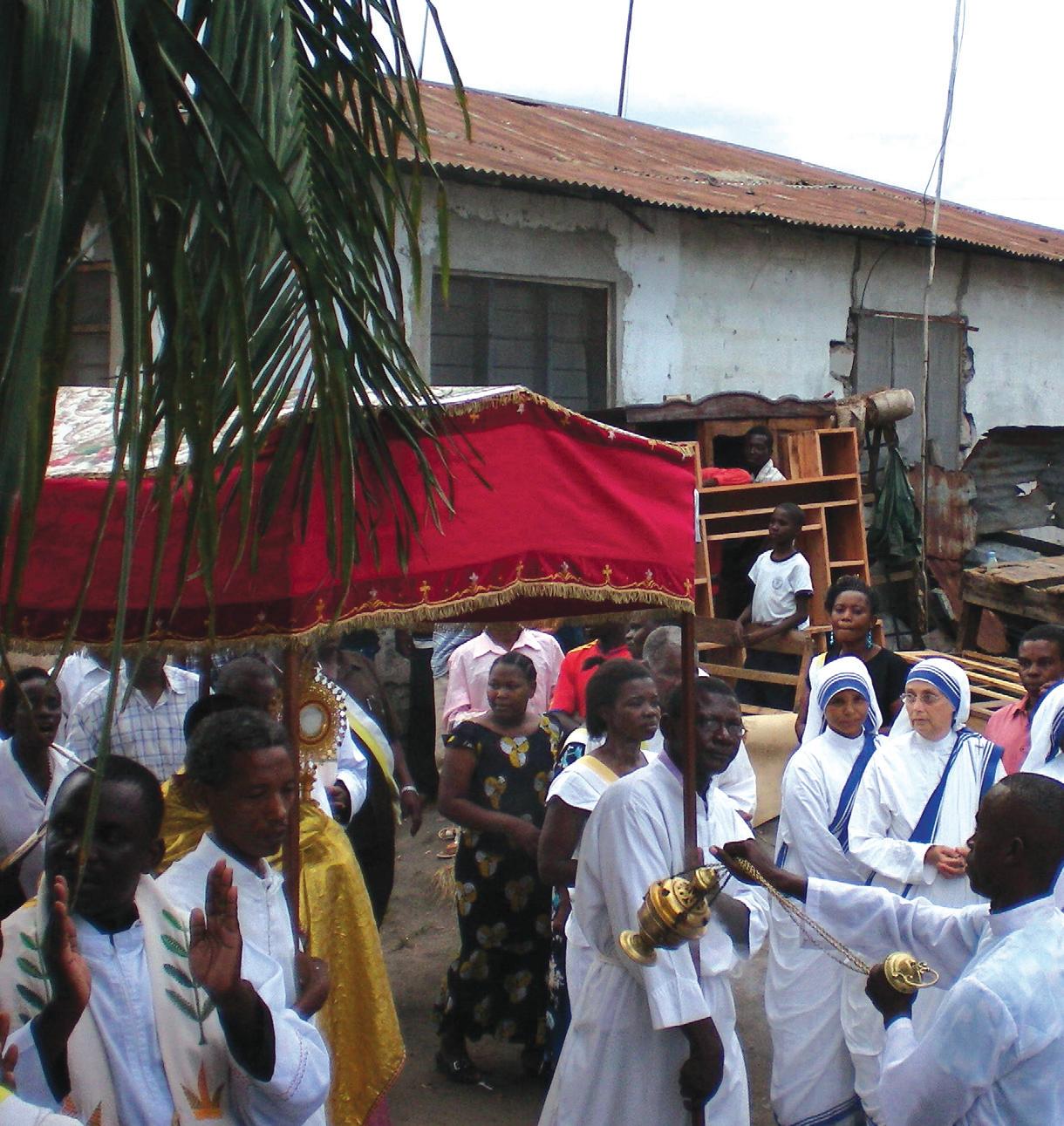
Community-minded: different religions seem to coexist fairly peacefully.
ly out of necessity (such as on the overcrowded buses) and partly by choice.
I was impressed by their strong emphasis on hospitality and the development of relationships within the community. The simple act of dropping something off at a friend’s place could easily turn into a several-hour event featuring an assortment of food and drinks. While there were almost no other
wazungo (white people) to be seen in our part of the city, which led to much curiosity and staring whenever we would wander out from the facility/parish, this did not prevent us from being welcomed enthusiastically wherever our hosts took us. The bulk of the neighbourhood are either Catholic or Muslim, with a few Pentecostal Christians thrown in the mix. The various religions seem to coexist fairly peacefully,
though this is not due to a kind of secular indifference.
Indeed, I was struck by the remarkable fervour on display at the local parish: loud church-bell pealing would compete with the Islamic call to prayer each dawn; overflow crowds would attend the several Sunday Masses which would go for at least two hours each; vibrant singing would break forth at every opportunity, with full-throated participation being valued more than being in tune; impassioned homilies would exhort both traditional morality and social justice, unafraid to challenge those present. While the bulk of my time was spent at the MC facility and the parish, I did take part in a couple of short excursions, including a day trip to nearby Zanzibar and a three-day safari in the country’s north to conclude my time there. I felt a little guilty about the latter, considering the considerable poverty surrounding us (including the chosen poverty of the Sisters) but I was thankful to have a break from the constant noise of the city and for the chance to experience something of the remarkable Tanzanian landscape.
Once again, the hospitality was exquisite though this time it was obviously designed for Western tourists.
The dissonance with the style of hospitality offered in our corner of Dar es Salaam was noticeable, and it was a reflection of the many contrasts in this ancient land: laidback yet in constant motion; proud of its roots yet with an eye on the West; materially poor yet spiritually profound.
 By Fr John Flader
By Fr John Flader
Over the years I have become aware of different groups promoting devotion to Our Lady of Fatima: the Blue Army; “Australia needs Fatima”; and a “Fatima Centre” with addresses in the US and Canada. Which one(s) should I support?
Ihave been asked this question numerous times. The Blue Army, founded in the United States in 1947 and now known as the World Apostolate of Fatima, is in a sense the official organisation promoting devotion to Our Lady of Fatima. It is an international association approved directly by the Holy See. In October 2005, the Pontifical Council for the Laity erected the World Apostolate of Fatima as an international public association of the faithful with juridical personality and, on 7 October 2010, the same Council approved its statutes definitively.
Thus, the organisation is officially approved by the Church at the highest level.
Among its better known publications are Soul Magazine, published in the United States, and Messenger, an international publication. One can support the World Apostolate of Fatima with all confidence.
The second organisation you mention, “Australia needs Fatima”, like its American counterpart “America needs Fatima”, is a work of the Society for the Defence of Tradition, Family and Property, an organisation founded in

Brazil in 1960 by Professor Plinio Correa de Oliveira, who died in 1995.The website of the organisation in Australia says: “The Australian Society for the Defence of Tradition, Family and Property (Australian TFP) is an organisation of lay Catholic Australians concerned about the moral crisis shaking the remnants of Christian
civilisation.” Unlike the World Apostolate of Fatima, TFP was never officially approved by the Church and, in fact, the Brazilian Bishops Conference on 18 April 1985 formally disapproved of it and ordered Catholics to have nothing to do with it.
This does not mean, of course, that the organisation cannot do a
good job of promoting devotion to Our Lady or of upholding moral values. Among the organisation’s publications promoting Fatima is an attractive calendar. Profits from the sale of the calendar go to support the work of TFP.
The third organisation to which you refer, “The Fatima Centre”, is positively disturbing.
I have been on its mailing list for many years, presumably because all priests are, and from the beginning I have been very concerned about the radical positions it takes.
The Centre has addresses in Constable, New York and Fort Erie, Ontario and its head is Fr Nicholas Gruner.
Letters are sometimes printed on the letterhead of the Archbishop Emeritus of Pondicherry and Cuddalore, India, the Most Rev S Michael Augustine.
The publications can be very critical of the Church, the Pope and the Cardinal Secretary of State.
They maintain that not all of the third secret of Fatima has been revealed and that Russia still needs to be consecrated to the Immaculate Heart of Mary or the world will come closer to the “annihilation of nations” foretold by Our Lady.
By contrast, Sr Lucia of Fatima has said that the consecration of the world to Our Lady in 1984 fulfilled Our Lady’s request.
When the Vatican’s Congregation for the Clergy issued a declaration in September 2001 stating that Fr Gruner had been suspended by his Bishop of the Diocese of Avellino in Italy, and that the forthcoming Rome conference organised by the Centre did “not enjoy the approval of legitimate ecclesiastical authority”, the Centre reacted with a vitriolic attack on the Vatican.
All in all, the Centre instils mistrust of the Pope and the Church rather than promoting a serene love for Our Lady and her message, and it should not be taken seriously.
What is important in any case is to love Our Lady and to carry out her wishes as expressed at Fatima in 1917, including conversion, penance, recitation of the Rosary, devotion to the Eucharist, and the consecration to her Immaculate Heart.
He was a priest and a scholar, and is regarded by some as the most outstanding English historian of the past millennia. Tony Evans traces the life of John Lingard, whose intellectual achievements have been overshadowed by religious faith.
If you possess one of those older hymn books – for example The Living Parish series, full of old favourites –and turn to the hymns to Our Lady, circa number 104, you will surely recognise the much loved “Hail Queen of Heaven, the ocean star, guide of the wanderer here below” etc. It contains a fervent plea to Mary, with a reminder her son “has paid the price of our iniquity”. Each verse ends either with the cry, “Pray for the sinner” or, “Pray for the wanderer, pray for me”.
Unlike so many other pious hymns of the period, the poetry here has a particular quality. The words are skilfully chosen and the sentiment hints that Mary is on our side, that she understands our situation. While theologically sound, it is also strongly comforting.
This hymn was obviously written, you might think, by someone not only holy but also skilled in the use of language.
And you would be right. The name of the author in tiny print below the final stanza is John Lingard (1771-1851).
Your curiosity aroused, you might wonder who was this John Lingard? You would be entitled to ask. Although a priest and historian of immense erudition and influence, a pioneer of forensic historiography based on private papers and archival sources, the author of a 10-volume history of England (seven editions over 40 years), and described by one contemporary authority as the greatest English historian of the second millennium, he is practically unknown today.
Ignored by modern publishers, history teachers and leading historians alike, it is little exaggeration to say that Lingard has suffered a curious but shameful neglect in recent years, amounting to no less than prejudicial ostracism. An exception is Professor Norman Davies, a leading British historian who devotes several pages of his mammoth study The Isles to Lingard, attempting to reinstate him, praising his scholarship and suggesting that students of history faced with the neglect of Lingard in academia should demand to know why.
Davies’ work, and that of another eminent authority, Professor Edwin Jones, may go some way to awake interest in Lingard’s work, and in this year, the 160th anniversary of his death, he may yet be restored to his rightful place in the pantheon of British historians.
John Lingard was born in the ancient city of Winchester in 1771, of humble Catholic parents, an old recusant family. His father was a carpenter. The boy’s exceptional academic talents singled him out for higher education and at age 11 he was awarded a bursary by Bishop Challoner to enable him to study for the priesthood at the English College in Douai, France – the youngest entrant who even at that age displayed a precocious intelligence. At that time, penal laws effective since the Reformation forbade Catholic seminaries in England. English priests, educated abroad, were tolerated but subject to various proscriptions.
Lingard quickly mastered several languages that were to provide the necessary keys to unlocking his historical researches at a later date. In his 11th year at Douai, however, the French Revolution brought the college to an end. A mob attacked, and Lingard and his companions only managed to escape capture by a combination of luck and artifice.
Returning home to England in 1793, Lingard accepted a post for a

short time as tutor in the recusant family of Lord Stourton.
A year later, he reunited with a group of ex-Douai students who took up residence at Crook Hall, near Durham. There he was appointed head of the schools of natural and moral theology. He was ordained priest in York in 1795. In 1808, the college moved to Ushaw Moor, a few miles west of Durham (where it survived as the leading Catholic seminary in the north of England until its closure this year).
read by them depends on my having the reputation of a temperate writer. The good to be done is by writing a book which Protestants will read.”
“In my account of the Reformation, I must say much to shock Protestants’ prejudices; and my only chance of being generally read by them depends on my having the reputation of a temperate writer.’”
It was about this time that Lingard published the first major work to bring him some fame and the respect of fellow scholars: The History and Antiquities of the Anglo-Saxon Church. He based his research on the original AngloSaxon and Latin documents of the time, and avoided the charge of presenting a Catholic slant on events by using his name but never his priestly title.
His object was always to write the truth based on original sources and unbiased scholarship, and he avoided controversy where possible. He explained: “In my account of the Reformation, I must say much to shock Protestants’ prejudices: and my only chance of being generally
Lingard’s exceptional intellectual gifts, and his holiness, were both noted by his superiors. He was offered prestigious appointments including the presidency of Maynooth College in Ireland and two bishoprics. But he declined all offers and confined himself instead to pastoral work in the quiet rural parish of Hornby, Lancashire. There he remained in comparative obscurity for 40 years, ministering to his little congregation, and spending much of his time writing his great 10-volume History of England
There are many stories told of him as a country priest; his influential catechism classes, his humour, his absent-mindedness, and his friendly concern for all in the district.
He was widely known as “the old doctor from whose door nobody was ever turned empty away”. One close friend was the Anglican rector and, when Lingard died in 1851, Hornby’s non-Catholic villagers placed a memorial plaque in their church; a plaque still there.
which he tracked down not merely in England but from across Europe. He compared state papers in various languages and studied private correspondence between diplomats and continental scholars, officials, and observers of events. His thoroughness and meticulous forensic system has been compared to the work of a detective or a trial lawyer. Very often, by digging behind the scenes, he was able to show how state papers (on which other historians relied) were often unreliable, merely reflecting the politically correct version of events. He would compare the reliability of two sources in a scientific approach. In this way, he was able to uncover the truth and as a result his findings often differed sharply from the popular, oft-repeated accounts of key events in British history.
One of the distinctive features of Lingard’s published history is the massive footnoting on nearly every page (sometimes occupying half the page) explaining where and how the information was found. Much of this material is as interesting as the main narrative above it. By this method, Lingard cast new light on many key events, refuting the widely accepted anti-Catholic approach of other historians of the time.
“My object is truth,” he wrote, “and in the pursuit of truth I have made it a religious duty to consult the original historians (sources). Who would draw from the troubled stream when he may drink at the fountain head?”
Lord Acton, Regius Professor of Modern History at Cambridge in 1895, stated that in his opinion “Lingard was never wrong”.
As virtuous as Lingard’s life was as a country priest, if that was all to say about him we could hardly justify the claims made above. Nor would the protests raised at his neglect by the contemporary historians, Professors Davies and Jones seem justified. It is when we turn to his extraordinary achievement in writing history – his methods, his diligence, his independent scholarship and his complete dedication to the truth – that we base our case for his reinstatement as “the greatest historian of the second millennium”. (The greatest English historian of the first millennium, according to Professor Jones, was the Venerable Bede.)
Lingard’s achievements must be measured against the dominant histories read, accepted and revered in the 19th century. Edward Gibbon, Thomas Carlyle, Lord Macaulay, David Hume and GM Trevelyan were the superstars.
Through their popular writings, they created a picture of the English nation that people most wanted to accept: a whig view, Protestant, united and nationalistic; a picture of triumph, national superiority and success. These writers saw history in philosophical terms, and were careless with facts, seeing historical writing as an opportunity for fine, stylish literature. Macaulay, still published today in fresh editions, is read for his eloquence and compulsive story-telling, not for his accuracy. He did not check sources as Lingard did, and relied heavily on tradition and government propaganda. He dismissed Lingard’s work and wrote sarcastically, “Lingard’s fundamental rule of judging seems to be that the popular opinion cannot possibly be correct.”
Lingard’s method was to base his narrative on original sources,
Lingard’s revelations, so revolutionary at the time, are now uncontested if not commonplace, although he is never given the credit for his original work. After Lingard, the writing of history was turned upside down; he was a pioneer who set new standards, the father of modern historiography. No serious history is written now unless based on original source criticism. Yet Lingard is never acknowledged.
It is tempting to compare Lingard along with his near contemporary, John Henry Newman. Dissimilar in obvious ways, they were both men of prayer, controversialists, prolific writers of important works and composers of popular hymns. Both priests were made Cardinals towards the end of their lives; Newman was reluctant to accept the honour but finally did so; Lingard continued to decline the honour, believing that his elevation and the consequent publicity would serve to weaken his reputation as an independent historian. His cardinalate was therefore kept secret – “in peto”.
There has never been any popular support for the canonisation of Lingard as there has with Newman. His life as a parish priest in a Lancashire country town was, to the casual observer (and even his immediate superiors), unremarkable.
But this writer believes a strong case might be made for canonisation based on his contribution to uncovering the truth in history, his defence of the Church, his dedication and his holiness, his humility and, in spite of his great scholarship, his concern for the simple people in his care and his faithfulness to his priestly duties. The patron saint of historians! What a fine role model he could become!
Tony Evans is a writer and biographer. His latest book, William Wardell: Building with Conviction, is available from the The Record Bookshop.
John Lingard: his object was always to write the truth based on original sources and unbiased scholarship.FRIDAY, 5 AUGUST
Pro-Life Witness
9.30am at St Brigid’s Parish, 69B Morrison Road, Midland. Begins with Holy Mass , followed by Rosary procession to the nearby abortion clinic, led by the Franciscan Friars of the Immaculate. To end abortion and for the conversion of hearts. Enq Helen 9402 0349.
SATURDAY, 6 AUGUST
Day With Mary
9am-5pm at Sacred Heart Parish, cnr Ovens Rd and Discovery Dr, Thornlie. Day of prayer and instruction based on Fatima message. 9am video; 10.10am Holy Mass; Reconciliation, Procession of Blessed Sacrament, Eucharistic Adoration, Sermons on Eucharist and our Lady, Rosaries and Stations of the Cross. BYO lunch. Enq: Franciscan Sisters of the Immaculate 9250 8286.
Vigil for Life
8.30am at St Augustine’s Parish, Gladstone St, Rivervale. Begins with Holy Mass followed by Rosary procession and vigil at nearby abortion clinic, led by Fr Paul Carey. Weekly prayer vigils: Monday, Thursday and Saturday: 8.30 -10.30am. For conversion of hearts and an end to abortion. Enq. Helen 9402 0349.
WEDNESDAY, 10 AUGUST
Fr John Rea Healing Ministry for Women
8pm at Disciples of Jesus Centre, 7 Howe St, Osborne Park. Fr John will be discussing healing, and praying individually for the ladies. Cost: collection. Enquiries Lucy 0405 841 498.
THURSDAY, 11 AUGUST
Fr John Rea Ministers in Fremantle
7.30pm at St Patrick’s Basilica, 47 Adelaide St, Fremantle. Prayer, Mass, and Healing service. Cost: collection. Enq: Michele 0450 457 887.
Healing Mass in honour of St Peregrine, patron of cancer sufferers
7pm at Sts John and Paul Parish, 5 Ingham Ct, Willetton. Mass followed by Veneration of the Relic of St Peregrine and anointing of the sick. Enq: Jim 9457 1539.
FRIDAY, 12 AUGUST
Youth meeting with Fr John Rea
7.30pm at 67 Howe St, Osborne Park. For young people 13-18 yrs old. Discussion and prayer for healing. Cost: collection. Enq: Mike or Simone 9202 6868.
SATURDAY, 13 AUGUST
Men’s Breakfast with Fr John Rea
7.30-9am, at 67 Howe St, Osborne Park. Great opportunity for fellowship and individual prayer for healing and other needs. Cost: $10. Enquiries: Reg 0429 777 007.
Divine Mercy –Healing Mass
2.30pm at St Francis Xavier Parish, 25 Windsor St, East Perth. Main celebrant: Fr Marcellinus. Reconciliation in English, Maltese and Italian. Divine Mercy prayers followed by Veneration of First Class Relic of Sr Faustina Kowalska. Refreshments afterwards. Enq: John 9457 7771.
St Padre Pio day of prayer
9am at Holy Spirit Parish, 2 Keaney Pl, City Beach. Begins with DVD. 10.30am – Exposition of Blessed Sacrament, Rosary, Divine Mercy, Silent Adoration and Benediction. 11.30am – Holy Mass, St Padre Pio Liturgy, Confession available; 12.30pm – bring plate to share. Enq: Res 6278 1540.
SUNDAY, 14 AUGUST
Fr John Rea Healing Service
3-5pm at 67 Howe St, Osborne Park. Fr John has an internationally acclaimed healing ministry. He will be ministering through prayer and worship and a Healing Service. Cost: collection. Enq: Michele 9202 6868.
Eucharistic reparation
3pm at St Pius X Parish, Paterson St, Manning. The World Apostolate of Fatima Aust inc invites you to attend a Eucharistic Hour. Enq: 9339 2614.
WEDNESDAY, 17 AUGUST
Fr John Rea Healing service
7.30pm at St Bernadette’s Parish, 5 Rennes Lane, Port Kennedy. An opportunity to hear Fr John Rea and experience his healing ministry. Cost: collection. Enq: Gaye 9593 4670 or Sharren 0434 581 372.
The Record reserves the right to decline any items submitted for publication in Panorama. The Record reserves the right to edit any items submitted for publication in Panorama. The deadline for submission on Panorama items is: 11am every Monday.
Peter Rosengren EditorTHURSDAY, 18 AUGUST
Fr John Rea Healing Mass at the Cathedral
7.30pm at the Cathedral, Victoria Sq, Perth. Fr John culminates his time in Perth with Prayer and Praise, Mass and Healing prayer. Enq: Michele 9202 6868.
SATURDAY, 20 AUGUST
“Youths and Peer Pressure”
2 Hour Youth Workshop
3.30-5.30pm at Lesmurdie Parish Centre, cnr Lesmurdie and Glyde Rds, Lesmurdie. Young people aged 13-17. Concludes with Rock Mass at 6pm. Speaker: Fr James Fanning. Coffee and tea available. Enq and RSPV: Gina Price on lesmurdieyouthgroup@hotmail.com or to the parish office on lesmurdie@perthcatholic.org.au.
“Meditation as Liberation” Community Day
10am-3.30pm at St Mary’s Parish, Yule Ave, Middle Swan. Led by Rev Stuart Fenner. Cost: $10. BYO Lunch. Enq: Secretary 9444 5810 or christianmeditation@iinet. net.au.
TUESDAY, 23 AUGUST
Spirituality and The Sunday Gospels Seminar
7-8pm at St Benedict’s School Hall, Alness St, Applecross. Jesus asks us to come as we are and to offer what little we have. Mt 14:13-21, first miracle of the loaves. CEO Accreditation - Faith Formation. Presenter: Norma Woodcock. Cost: collections. Enq: 9487 1772 or www. normawoodcock.com.
SATURDAY, 27 AUGUST
Healing retreat for couples
9.30am-5pm at Holy Family Parish, Lot 375 Alcock St, Maddington. Inner healing prayers for couples: a day for couples to understand themselves in the light of God’s Word by Vincentian Fathers. BYO lunch. Enq and registration: Melanie 0410 605 743 or m.fonseca@curtin.edu.au.
SUNDAY, 28 AUGUST
Migrant and Refugee Sunday Event
12pm at St Joachim’s Parish, cnr Shepperton Rd and Harper St, Victoria Park. The Filipino Chaplaincy of Perth Archdiocese will host a Mass. All people of other ethnic groups welcome. Dress code: we encourage National dress. Followed by fellowship. Please bring a plate to share. Enq: Fr Armando 9470 9113 or 0401 197 310.
WEDNESDAY, 5 TO WEDNESDAY, 19 OCTOBER
Pilgrimage to Rome – San Giovanni Rotondo –Medjugorje
Spiritual Director: Fr Ronan Murphy. 3 nights Rome - 2 nights San Giovanni Rotondo (Padre Pio) Monte Gargano and Lanciano (Eucharistic Miracle) and 7 nights Medjugorje (alleged apparition of our Blessed Mother) Cost $3,990 includes: flights (Emirates), bed, breakfast, evening meals, transfers, guide, taxes and tipping. Enq: Eileen 9402 2480, 0407 471 256 or medjugorje@y7mail. com.
FRIDAY, 11 TO TUESDAY, 22 NOVEMBER
Pilgrim Tour To The Holy Land Jordan, Israel and Egypt. Spiritual Director: Fr Sebastian Kalapurackal VC from St Aloysius Church, Shenton Park. Enq: Francis – Coordinator, 9459 3873 or 0404 893 877 or Skype ID: perthfamily.
SATURDAY, 25 FEBRUARY 2012
A reunion for Holy Cross Primary School, Kensington
Any ex-students or family members please contact Julie Bowles (nee O’Hara) on 9397 0638 or email jules7@iinet. net.au.
EVERY SUNDAY Gate of Heaven Catholic Radio Join the Franciscans of the Immaculate from 7.30-9pm
on Radio Fremantle 107.9FM for Catholic radio broadcast of EWTN and our own live shows. Enq: radio@ausmaria. com.
Pilgrim Mass - Shrine of the Virgin of the Revelation
2pm at Shrine, 36 Chittering Rd, Bullsbrook. Commencing with Rosary followed by Benediction. Reconciliation is available before every celebration. Anointing of the Sick administered during Mass every second Sunday of the month. Pilgrimage in honour of the Virgin of the Revelation, last Sunday of the month. Side entrance to the church and shrine open daily between 9am-5pm. Enq Sacri 9447 3292.
EVERY FIRST SUNDAY
Divine Mercy Chaplet and Healing Prayer
3pm at Santa Clara Church, 72 Palmerston St, Bentley. Includes Adoration and individual prayer for healing.
Spiritual leader: Fr Francisco. All welcome. Enq: Fr Francisco 9458 2944.
Divine Mercy
1.30pm at St Francis Xavier Parish, 25 Windsor St, East Perth. Main celebrant: Fr Alphonsus. Homily on St Maximilian Kolbe. Includes Exposition of the Blessed Sacrament and Reconciliation, Holy Rosary, Chaplet of Divine Mercy and Divine Mercy prayers. Followed by Benediction and Veneration of First Class Relics of St Faustina Kowalska. Upcoming date: 7 August. Refreshments afterwards. Enq: John 9457 7771.
EVERY SECOND SUNDAY
Healing Hour for the Sick
6pm at St Lawrence Parish, 392 Albert St, Balcatta. Begins with Mass, Exposition of the Blessed Sacrament and prayers. Enq: Fr Irek 9344 7066 or ww.stlawrence. org.au.
EVERY THIRD SUNDAY OF THE MONTH
Oblates of St Benedict Meet
2pm at St Joseph’s Convent, York St, South Perth. For all interested in studying the rule of St Benedict and its relevance to the everyday life of today for laypeople. Afternoon tea provided. Enq: Secretary 9457 5758.
EVERY FOURTH SUNDAY OF THE MONTH
Holy Hour for Vocations to the Priesthood, Religious Life
2-3pm at Infant Jesus Parish, Wellington St, Morley. The hour includes Exposition of the Blessed Eucharist, silent prayer, Scripture and prayers of intercession. Come and pray that those discerning vocations to the priesthood or Religious life hear clearly God’s loving call to them.
St Mary’s Cathedral Youth group – fellowship with supper
5pm at Mary’s Cathedral, 17 Victoria Sq, Perth. Begins with Youth Mass followed by fellowship downstairs in parish centre. Bring a plate to share. Enq: Bradley at email youthfromsmc@gmail.com.
EVERY MONDAY
Evening Adoration and Mass
7pm at St Thomas Parish, Claremont, cnr Melville St and College Rd. Begins with Adoration, Reconciliation, Evening Prayer and Benediction, followed by Mass and Night Prayer at 8pm. Enq: Kim 9384 0598, claremont@ perthcatholic.org.au.
EVERY TUESDAY
Bible Teaching with a difference
7.30pm at St Joachim’s parish hall, Shepparton Rd, Victoria Park. Exciting revelations with meaningful applications that will change your life. Novena to God the Father, followed by refreshments. Bring Bible, a notebook and a friend. Enq: Jan 9284 1662.
Novena to Our Lady of the Miraculous Medal
6pm at the Pater Noster Church, Marmion and Evershed Sts, Myaree. Mass at 5.30pm followed by Benediction. Enq: John 0408 952 194.
EVERY WEDNESDAY
Holy Spirit of Freedom Community
7.30pm at The Church of Christ, 111 Stirling St, Perth. We are delighted to welcome everyone to attend our Holy Spirit of Freedom Praise Meeting. Enq: 0423 907 869 or hsofperth@gmail.com.
Holy Hour at Catholic Youth Ministry
6pm at 40A Mary St, Highgate, Catholic Pastoral Centre. 5.30pm Mass followed by $5 fellowship supper. Enq: Stefania 9422 7912 or www.cym.com.au.
Bible Study at Cathedral
6.15pm at Mary’s Cathedral, 17 Victoria Sq, Perth. Deepen your Faith through reading and reflecting on Holy Scripture by Fr Jean-Noel. Meeting room beneath Cathedral. Enq: Marie 9223 1372.
EVERY FIRST WEDNESDAY
Holy Hour prayer for Priests
7.30-8.30pm at Holy Spirit Parish, 2 Keaney Pl, City Beach. All welcome. Enq: Linda 9341 3079.
SECOND WEDNESDAY OF THE MONTH
Chaplets of the Divine Mercy
7.30pm at St Thomas More Catholic Parish, Dean Rd, Bateman. A beautiful, prayerful, sung devotion accompanied by Exposition and followed by Benediction. Enq: George 9310 9493 or 9325 2010 (w).
EVERY THURSDAY
Divine Mercy
11am at Sts John and Paul Church, Pinetree Gully Rd, Willetton. Pray the Rosary and Chaplet of Divine Mercy, and for the consecrated life, especially here in John Paul Parish. Conclude with veneration of the First Class Relic of St Faustina. Please do come and join us in prayer. Enq: John 9457 7771.
St Mary’s Cathedral Praise Meeting
7.45pm every Thursday at the Legion of Mary’s Edel Quinn Centre, 36 Windsor St, East Perth. Includes Praise song and healing ministry. Enq: Kay 9382 3668 or fmi@ flameministries.org.
FIRST THURSDAY OF THE MONTH
Prayer in style of taize
7.30-8.30pm at Our Lady of Grace Parish, 3 Kitchener St, North Beach. Includes prayer, song and silence in candlelight – symbol of Christ the light of the world. Taize info: www.taize.fr Enq: Secretary 9448 488 or 9448 4457.
FIRST FRIDAY OF THE MONTH
Holy Hour for Vocations to the Priesthood and Religious Life
7pm at Little Sisters of the Poor Chapel, 2 Rawlins St, Glendalough. Mass, followed by Adoration with Fr Doug Harris. All welcome. Refreshments provided.
Catholic Faith Renewal Evening
7.30pm at Sts John and Paul Parish, Pinetree Gully Rd, Willetton. Songs of Praise, sharing by a priest followed by Thanksgiving Mass and light refreshments after Mass. All welcome to attend and bring your family and friends. Enq: Kathy 9295 0913, Ann: 0412 166 164 or catholicfaithrenewal@gmail.com.
Communion of Reparation All Night Vigils
7pm-1.30am at Corpus Christi Church, Lochee St, Mosman Park. Enq: Vicky 0400 282 357 and at St Gerard Majella Church, Ravenswood Dr and Majella Rd, Mirrabooka. Enq: Fr Giosue 9349 2315, John or Joy 9344 2609. The Vigils consist of two Masses, Adoration, Benediction, Prayers and Confession in reparation for the outrages committed against the United Hearts of Jesus and Mary. All welcome.
Healing Mass
7pm at St Peter’s Parish, Wood St, Inglewood. Reconciliation, praise and worship, Eucharistic Adoration, Benediction, Anointing of the Sick, special blessings and fellowship after the Mass. Celebrants, Fr Dat (parish priest) and specially invited priests. All welcome. Enq: Priscilla 0433 457 352, Catherine 0433 923 083 and Mary-Ann 0409 672 304.
Healing and Anointing Mass
8.45am Pater Noster Church, Evershed St, Myaree. Begins with Reconciliation followed by 9am Mass of the Sacred
C R O S S W O R D
ACROSS 2
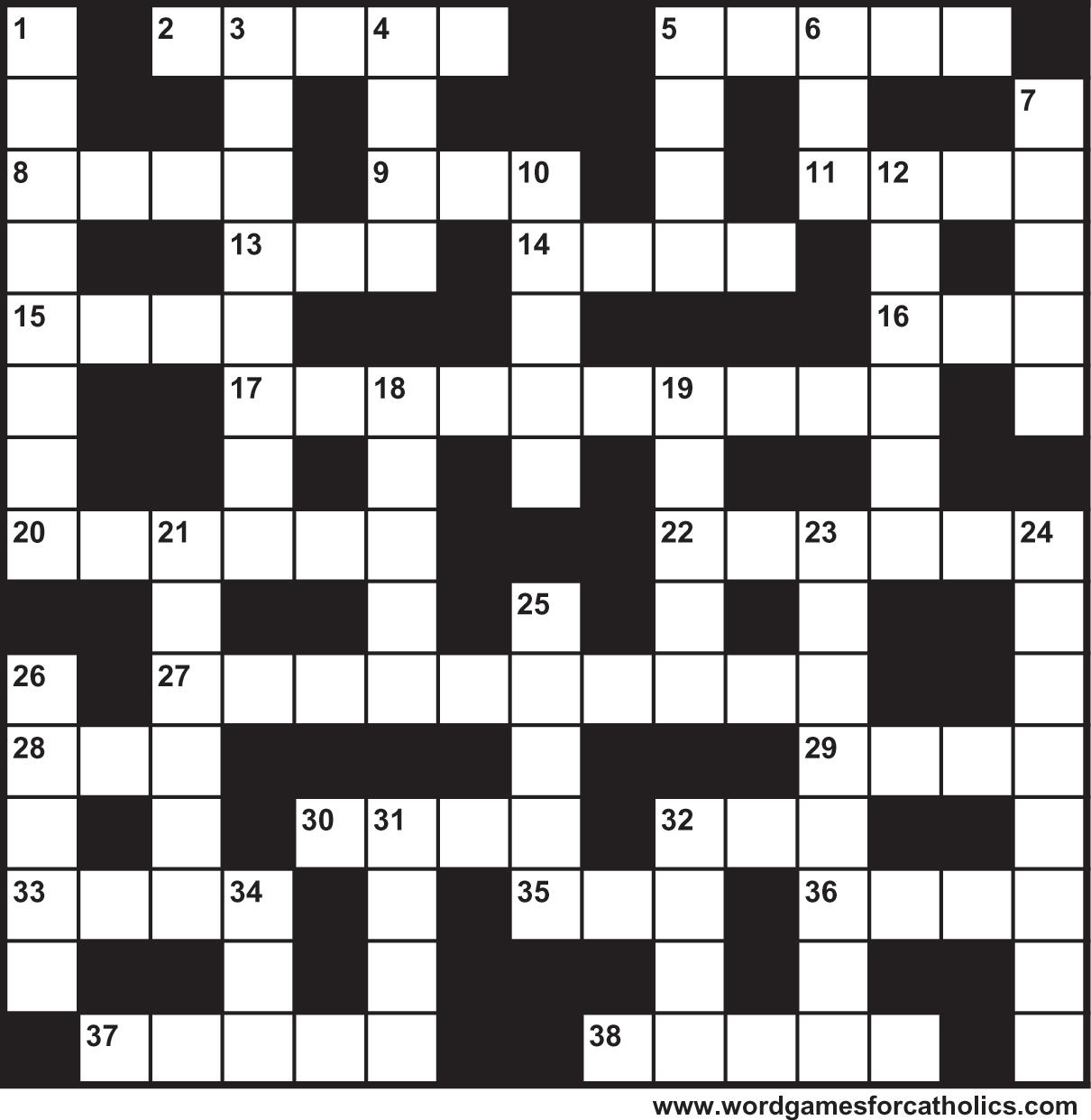
Canonised Pope known as “the Great”
8 Last word
9 Nephew of Abraham
11 Biblical twin
13 Number of each animal Noah took in the ark
14 Communion wafer
15 ___ et Orbi (papal speech)
16 Bppk of the Pentateuch
17 Mary, at Guadalupe
20 Catholic actor- governor Schwarzenegger
22 Biblical hunter
27 Education in the faith of the Church
28 The Red ___
29 Patrickʼs place
30 The Diocese of Des Moines is here
32 “…the fish of the sea and the birds of the ___” (Gn 1:26)
us not into temptation…”
Hesburgh of Notre
Dame,
Jesus wore one of thorns
Language of the New Testament DOWN
1
10
Catholic
and Benjamin, to
Aquinasʼ opus, for short
19 Housing for the Patriarchs
21 Council of 325AD
23 Prayer of repentance
24 The ___ Church (family)
25 Common biblical harvest
26 Old Testament hymn
31 Paul refers to these animals in 1 Cor 9:9
32 Hebrew month

WRR LAWN MOWING & WEED
SPRAYING Garden clean ups and rubbish removal. Get rid of bindii, jojo and other unsightly weeds. Based in Tuart Hill. Enq 9443 9243 or 0402 326 637.
BUSINESS OPPORTUNITY
Work from Home - P/T or F/T, 02 8230 0290 or visit www.dreamlife1.com.
ALL AREAS. Competitive Rates. Mike Murphy Ph 0416 226 434.
BUSINESS FOR SALE
DONGARA PIZZA BAR
Ph 08 9927 1389 after 3.30pm or MOB 0400 579 117.
FOR SALE CHEAP; VARIOUS CATHOLIC/PROTESTANT Books New/2nd Hand/DVDs/ CDs 9440 4358.
ARE YOU BUYING OR SELLING real estate or a business? Why not ask Excel Settlements for a quote for your settlement. We offer reasonable fees, excellent service and no hidden costs. Ring Excel on 9481 4499 for a quote. Check our web site on www.excelsettlements.com.au.



Heart of Jesus, Anointing of the Sick and Prayers to St Peregrine. Enq: Joy 9337 7189.
EVERY FIRST SATURDAY
Healing Mass 12.35pm at St Thomas Parish, cnr Melville St and College Rd, Claremont. Spiritual leader: Fr Waddell. Enq: Kim 9384 0598, claremont@perthcatholic.org. au.
EVERY THIRD SATURDAY
Voice of the Voiceless Healing Mass 12pm at St Brigid’s Parish, 211 Aberdeen St, Northbridge. Upcoming date: Saturday, 23 July. Bring a plate to share after Mass. Enq: Frank 9296 7591 or 0408 183 325.
Catholic clarity for complex times
PAGES 6 AND 20
FREE DIVINE MERCY IMAGE FOR PARISHES
High quality oil painting and glossy print –Divine Mercy promotions
Images are of very high quality. For any parish willing to accept and place inside the Church. Oil paintings160 x 90cm and glossy print -100 x 60cm. Enq: Irene 922 11247 or 9417 3267 (w).
SCHOENSTATT MOVEMENT
Invites you to join prayer group Marian-centred movement. Regular prayer, discussions, self-education and support in daily striving. We have groups for couples, mothers, men, women and youth. For more information on Schoenstatt: http://www.schoenstatt.org.au. Enq: Sr Georgia 9399 2349 or g.heger@optusnet.com.au.
Deadline: 11am Monday
NEW BOOK BINDING, General Book Repairs; Rebinding; New Ribbons; Old Leather Bindings Restored.Tydewi Bindery 0422 968 572.
HOLIDAY ACCOMMODATION
ESPERANCE 3 bedroom house f/furnished Ph 08 9076 5083.
EDUCATION COUNSELLING
SELF AWARENESS AND RELATIONSHIPS COURSE
For singles, couples, marriage prep 12 Mondays, first on 25 July, 5-7pm at RCPD, Fremantle, cost $288 or $240 conc. Call Eva: 0409 405 585. www.members.dodo.com.au.
BRENDAN HANDYMAN
SERVICES Home, building maintenance, repairs and renovations. NOR. Ph 0427 539 588.
PROPERTY MAINTENANCE. Your handyperson. No job too small. SOR. Jim 0413 309 821.
BRICK RE-POINTING Ph Nigel 9242 2952.
PERROTT PAINTING Pty Ltd
For all your residential, commercial painting requirements. Ph Tom Perrott 9444 1200.
PICASSO PAINTING Top service. Ph 0419 915 836, fax 9345 0505.
7 S 19TH SUNDAY IN ORDINARY TIME
Gr 1 Kgs 19:9, 11-13 Elijah covered his face
Ps 84:9-14 Mercy and faithfulness
Rom 9:1-5 Union with Christ
Mt 14:22-33 Do not be afraid
8 M ST MARY MACKILLOP, Religious (Feast)
Wh Jdt 8:11-17, 28-31 Plead God to help us
Ps 31:1-5, 7-8 Rock of refuge
Mt 6:25-34 God’s kingdom first
9 Tu St Teresa Benedicta of the Cross, virgin, martyr (O)
Gr Deut 31:8 Be strong, stand firm
Mt 18:1-5, 10, 12-14 My Father in heaven
10 W ST LAWRENCE, DEACON, MARTYR (Feast)
Red 2 Cor 9:6-10 Something to spare
Ps 111:1-2, 5-9 A steadfast heart
Jn 12:24-26 A rich harvest
CLASSIFIEDS W O R D S L E U T H
CATHOLICS CORNER Retailer of Catholic products specialising in gifts, cards and apparel for Baptism, Communion and Confirmation. Ph 9456 1777. Shop 12, 64-66 Bannister Rd, Canning Vale. Open Mon-Sat.
RICH HARVEST YOUR CHRISTIAN SHOP Looking for Bibles, CDs, books, cards, gifts, statues, Baptism/Communion apparel, religious vestments, etc. Visit us at 39 Hulme Ct (off McCoy St), Myaree. Ph 9329 9889 (after 10.30am Mon to Sat). We are here to serve.
KINLAR VESTMENTS
Quality hand-made and decorated vestments: Albs, Stoles, Chasubles, Altar linen, banners, etc. 12 Favenc Way, Padbury. By appointment only. Ph Vickii on 9402 1318, 0409 114 093 or kinlar.vestments@gmail.com.
OTTIMO Convenient location for Bibles, books, cards CD/DVDs, candles, medals, statues and gifts at Shop 41, Station St Market, Subiaco. Fri-Sun, 9-5pm. Call Eva on: 0409 405 585.
Quality Tax Returns prepared by registered tax agent with over 35 years’ experience. Call Tony Marchei on 0412 055 184 for appt. AXXO Accounting & Management, Unit 20/222 Walter Rd, Morley.
11 Th St Clare, virgin (M)
Wh Josh 3:7-11, 13-17 I will be with you
Ps 113A: 1-6 Jordan turned back
Mt 18:21-19:1 Give me time
12 F St Jane Frances de Chantal, Religious (O)
Gr Josh 24:1-13 We are witnesses
Ps 135:1-3, 16-18, 21-22, 24 His love is everlasting
Mt 19:3-12 The two become one
13 S Ss Pontian, Pope, and Hippolytus, priest, martyrs (O)
Gr Josh 24:14-29 W are witnesses
Ps 15:1-2, 5, 7-8, 11 My portion and cup
Mt 19:3-15 Leave the children be
14 S 20th SUNDAY IN ORDINARY TIME
Gr Isa 56:1, 6-7 House of prayer
Ps 66:2-3, 5-6, 8 Shed your light
Rom 11:13-15, 29-32 God’s mercy to all
W A L K W I T H H I M Page 19 3 August 2011, The Record CLASSIFIEDS




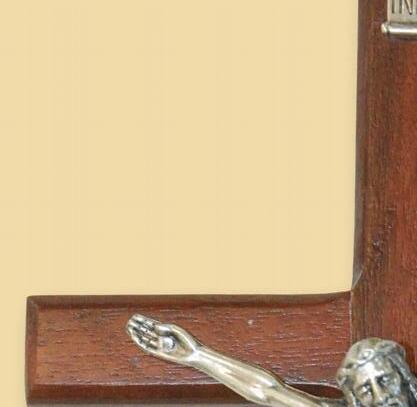










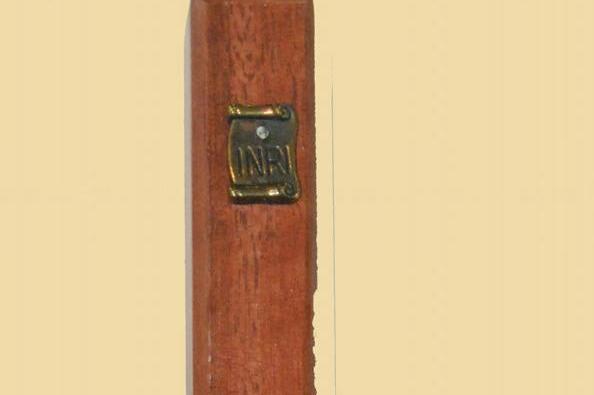


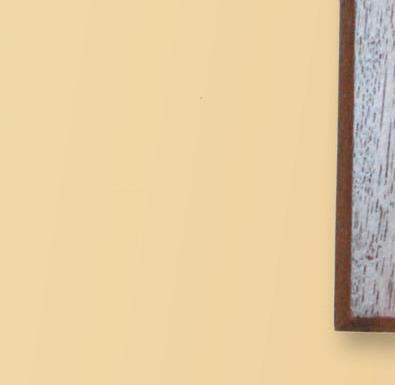





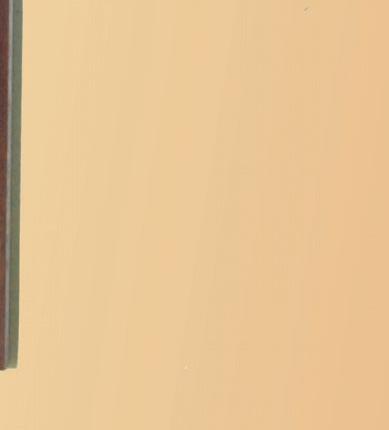
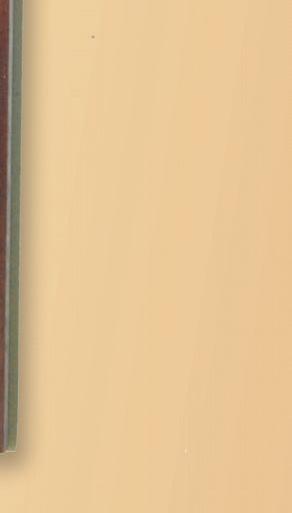


P P

Small: RRP $75.00
Large: RRP $95.00







Wa sign of


HEN St Mary’s Cathedral was partly demolished in 2008 to allow for its historic completion, plenty of the hardwood unique to WA and known as Jarrah used in its construction was discarded. The Record wanted to preserve as much of this precious part of history as it could, so we took discarded Jarrah and turned it into a range of beautiful objects that not only help to maintain a link with our past but also help to lift our thoughts to God. The St Mary’s Cathedral crucifixes are one such example of keeping history alive as we look with confidence to the future. These beautiful objects of devotion that were once part of St Mary’s Cathedral can now hang in pride of place, reminding us of the pioneers of the past and the faith we share with them.
